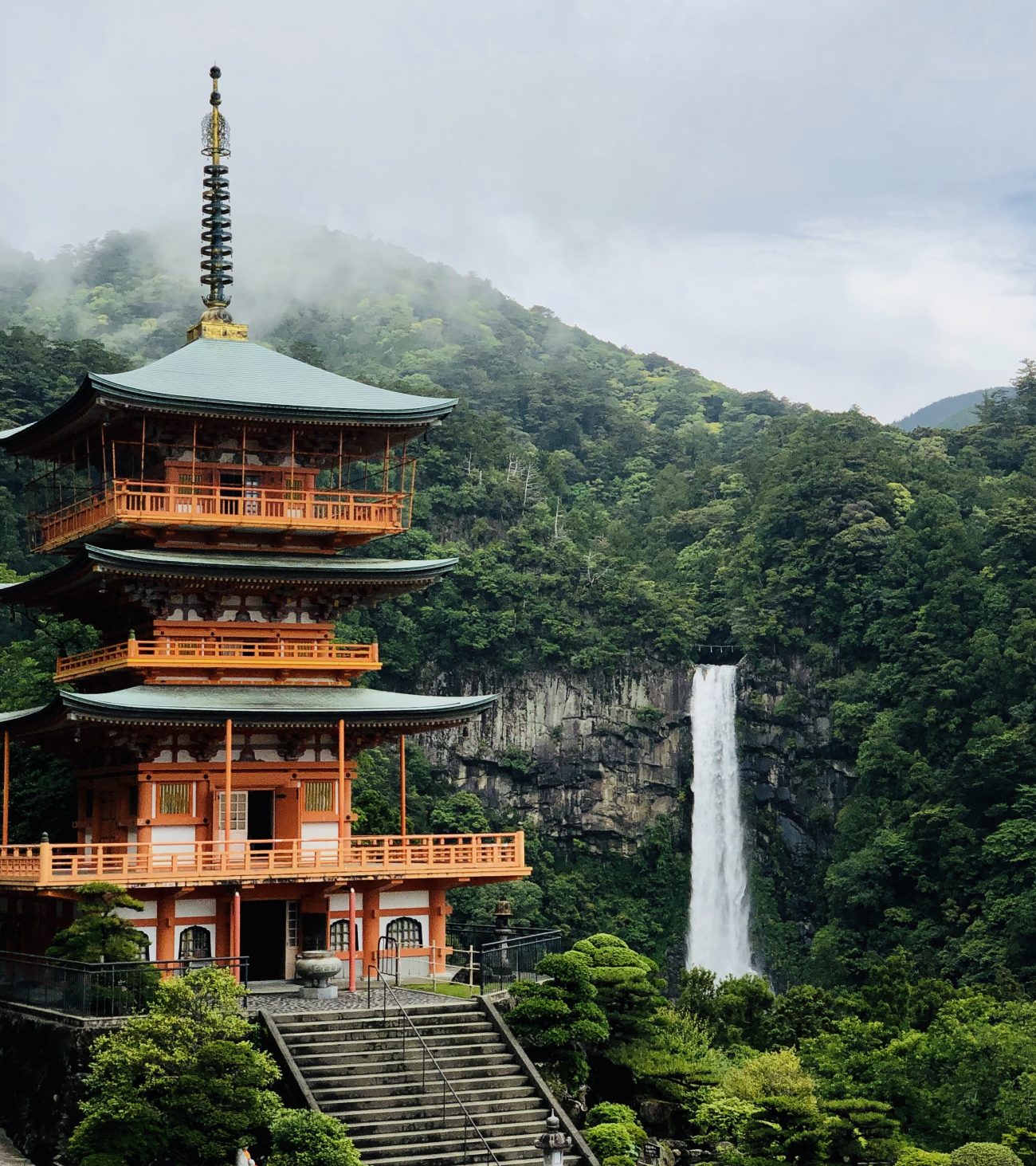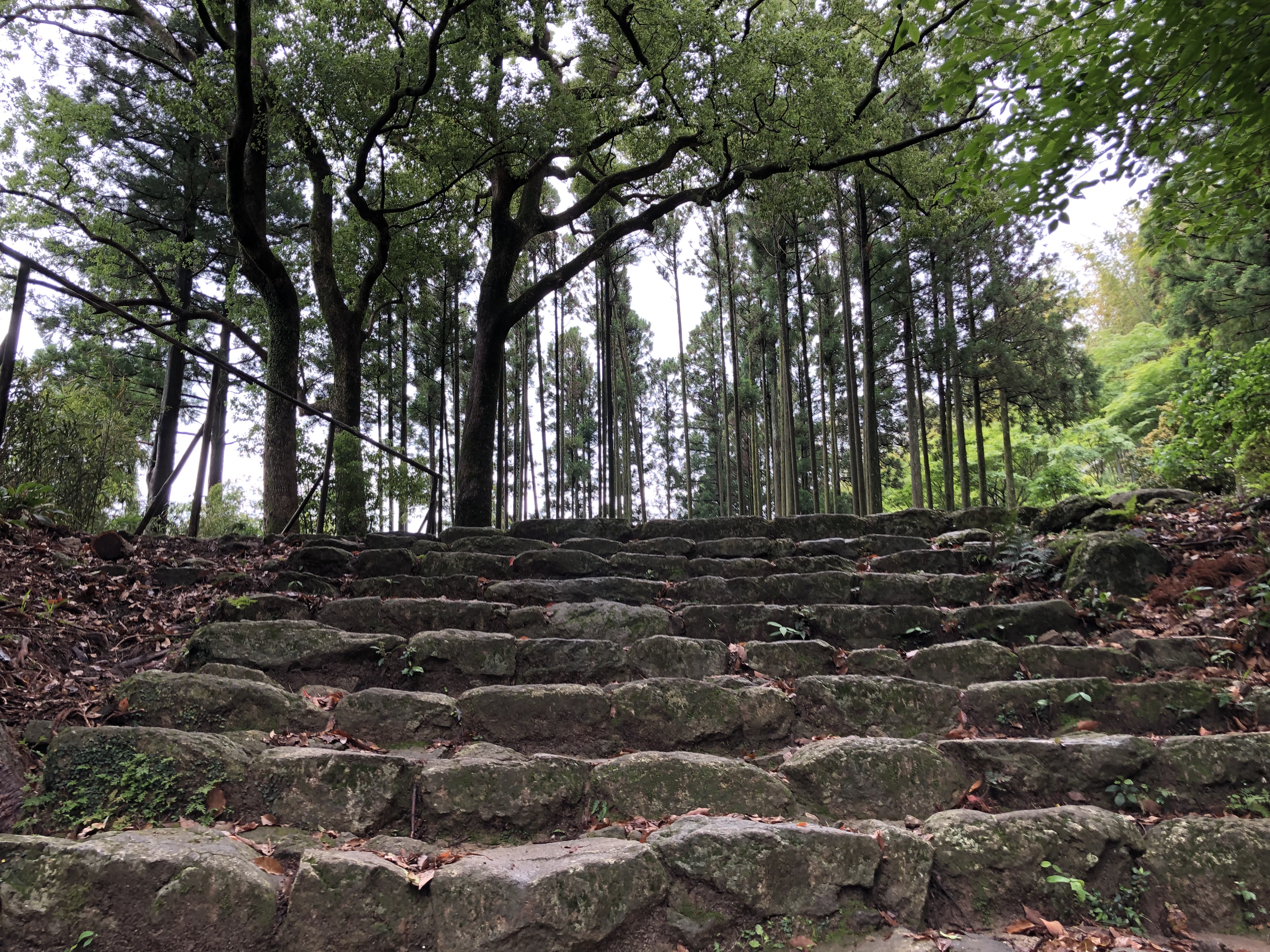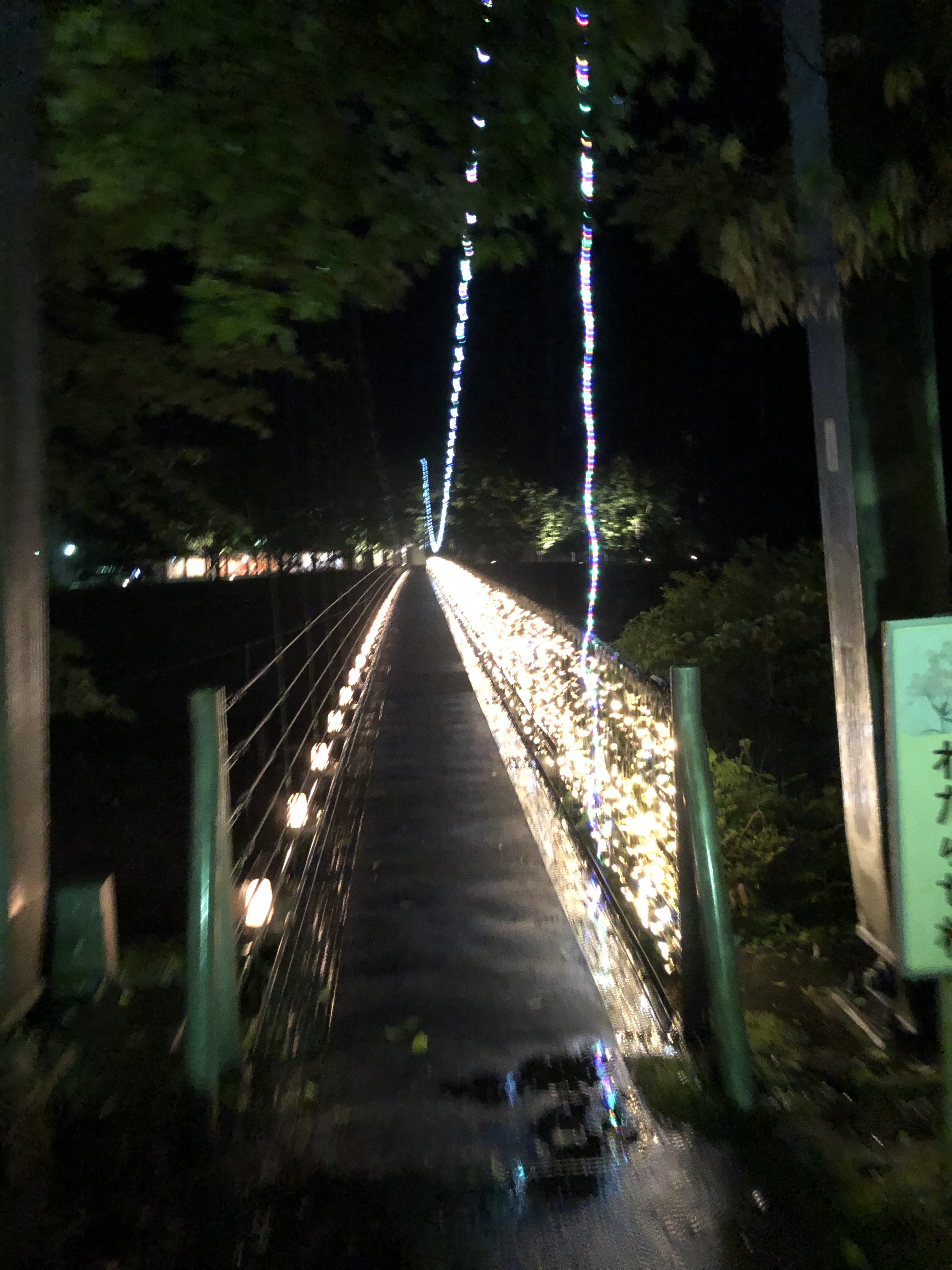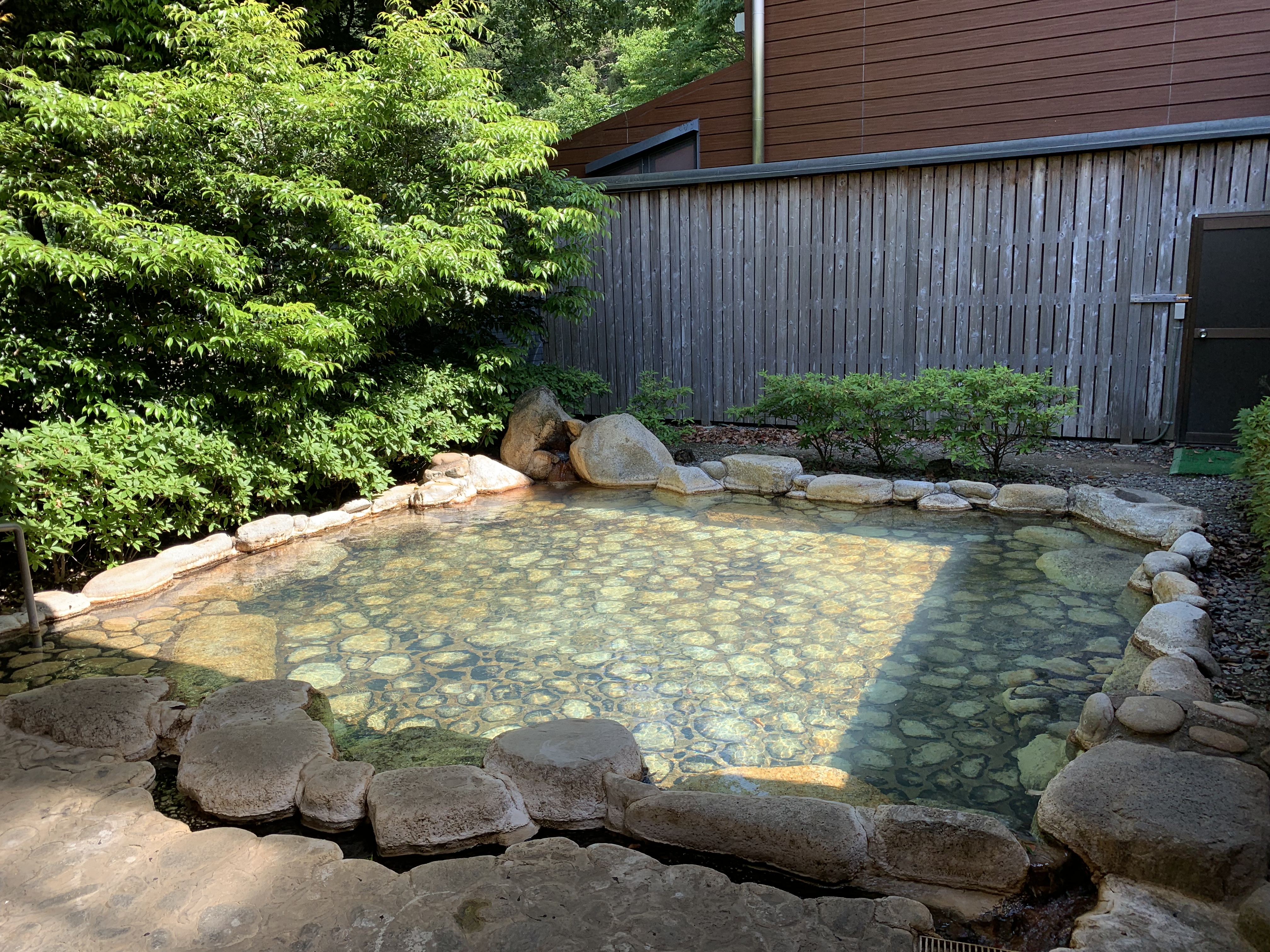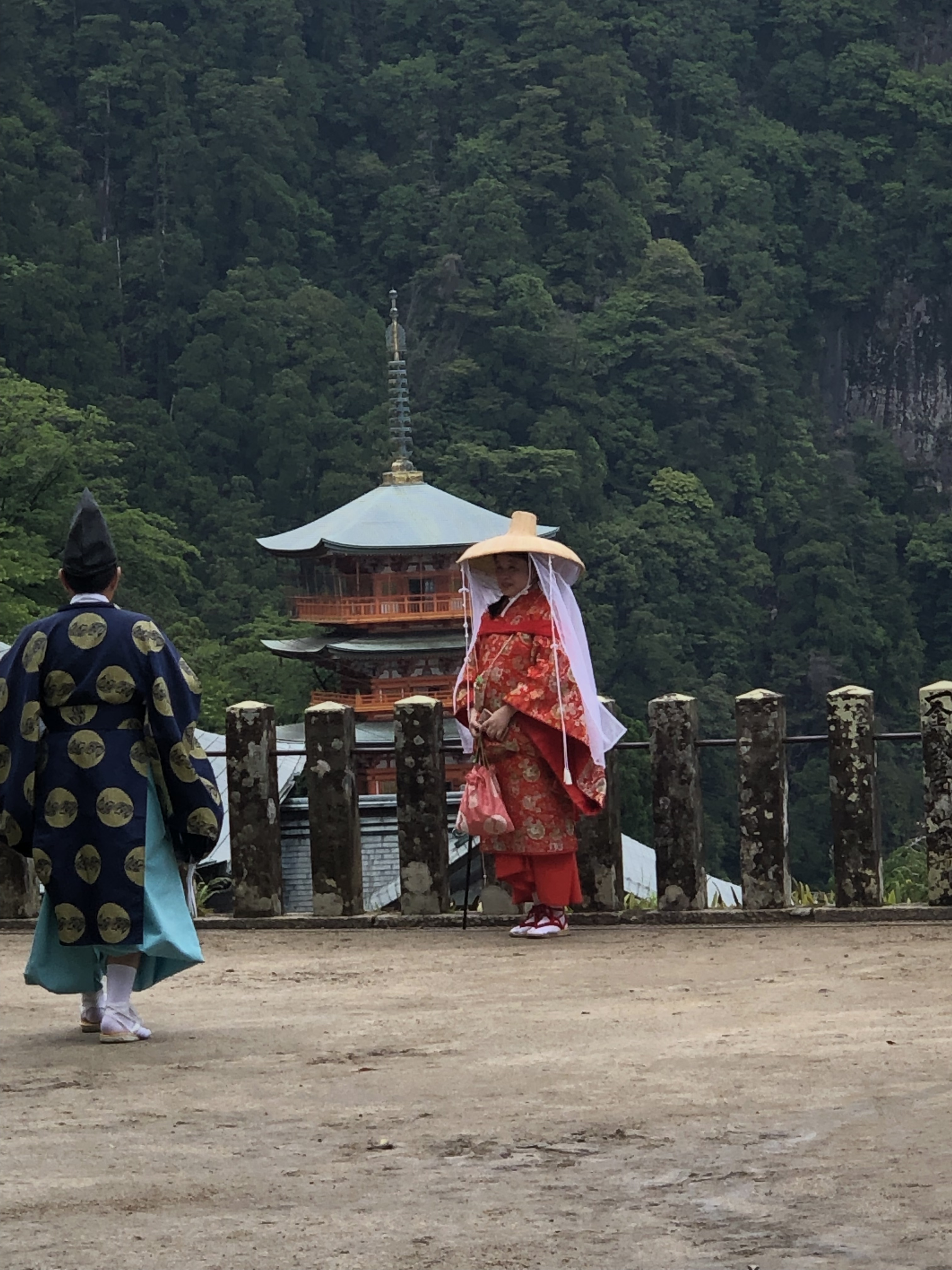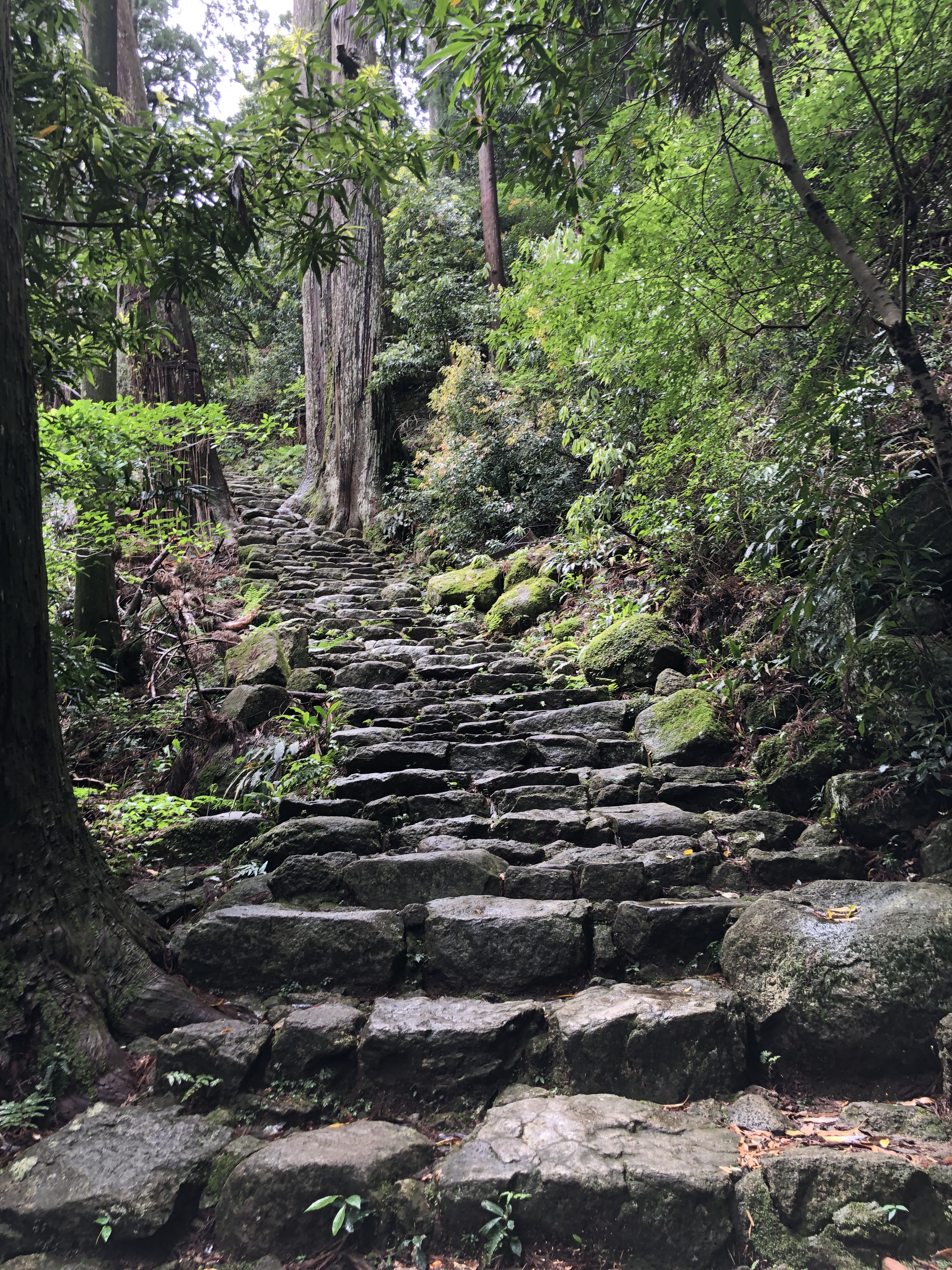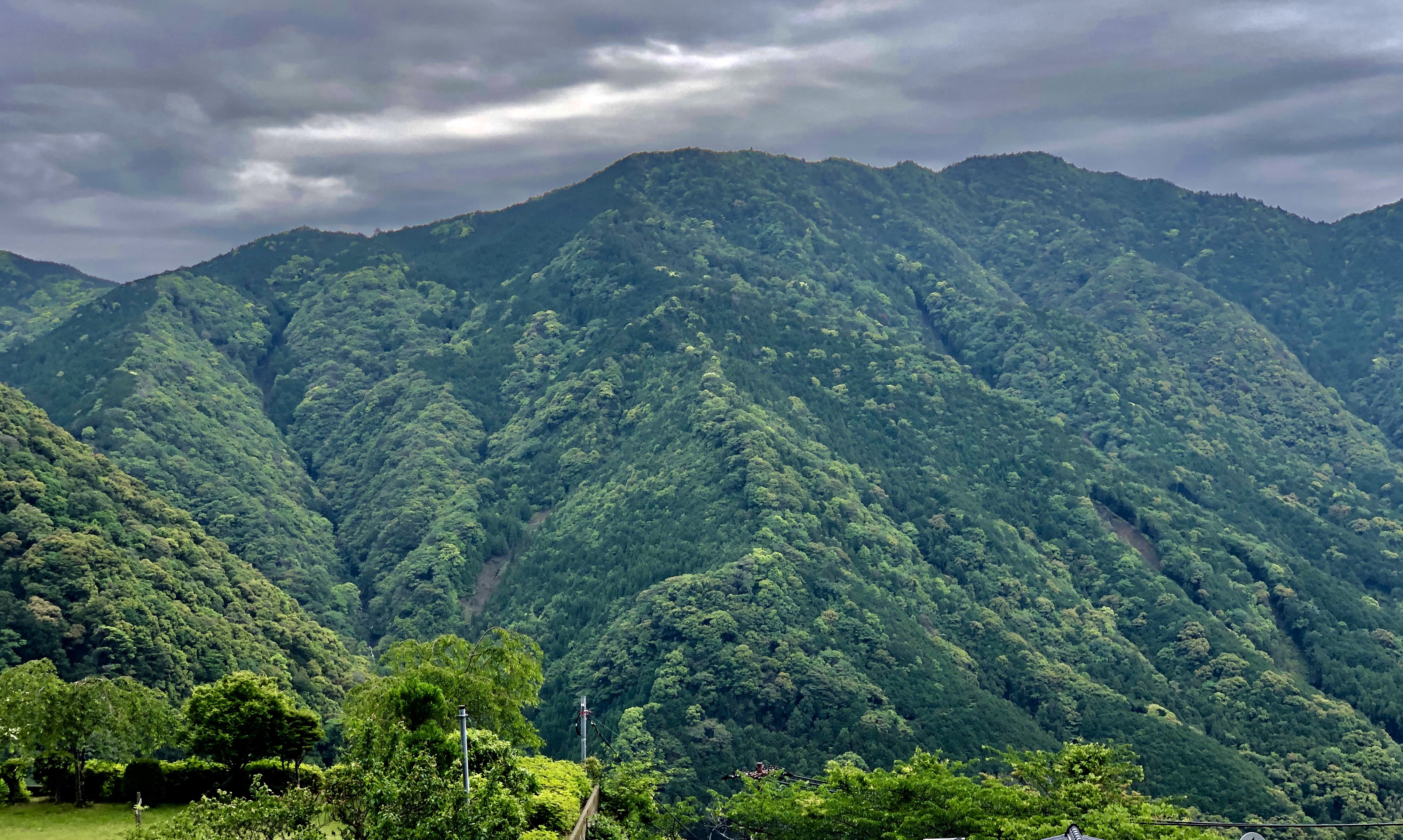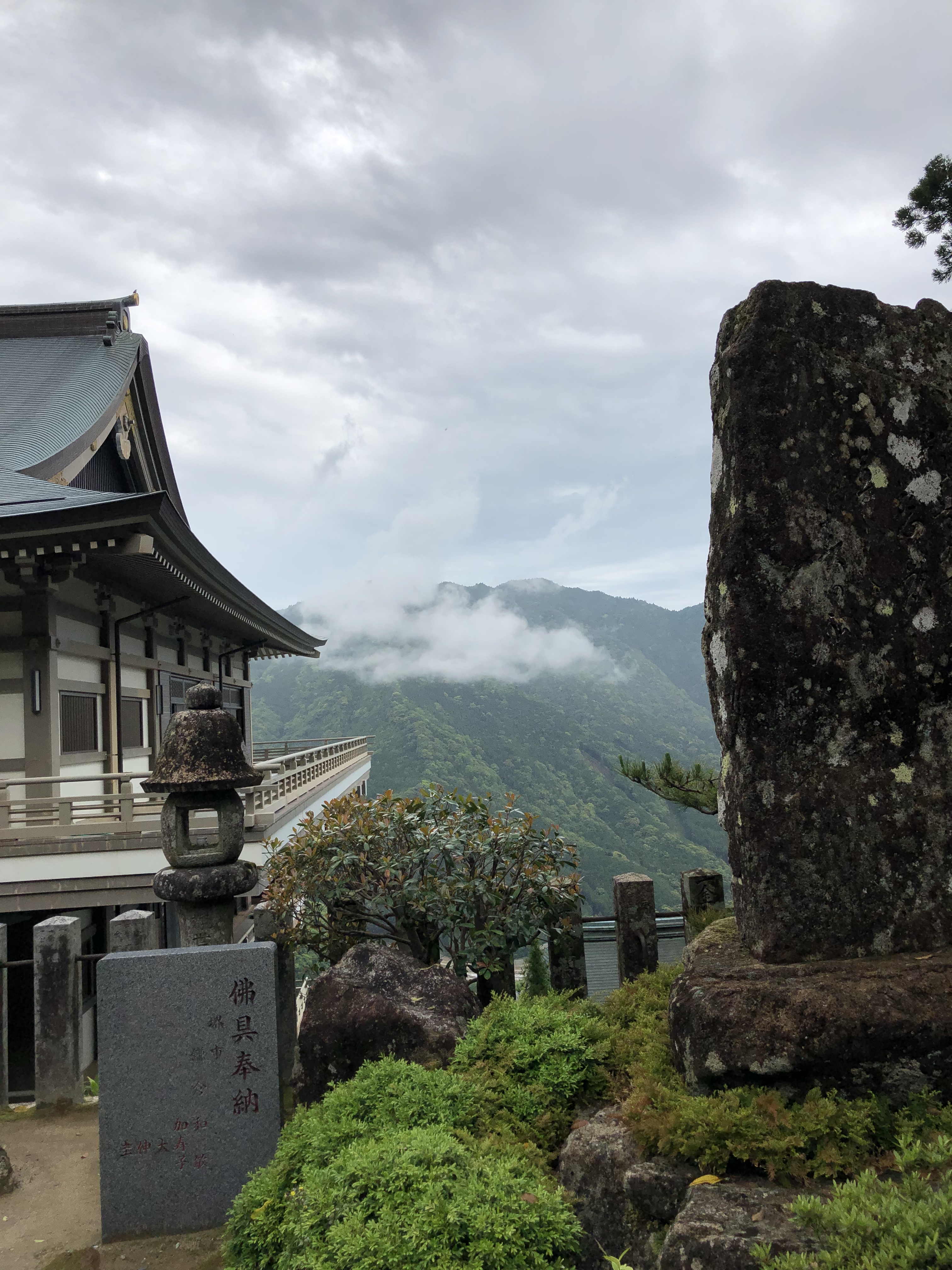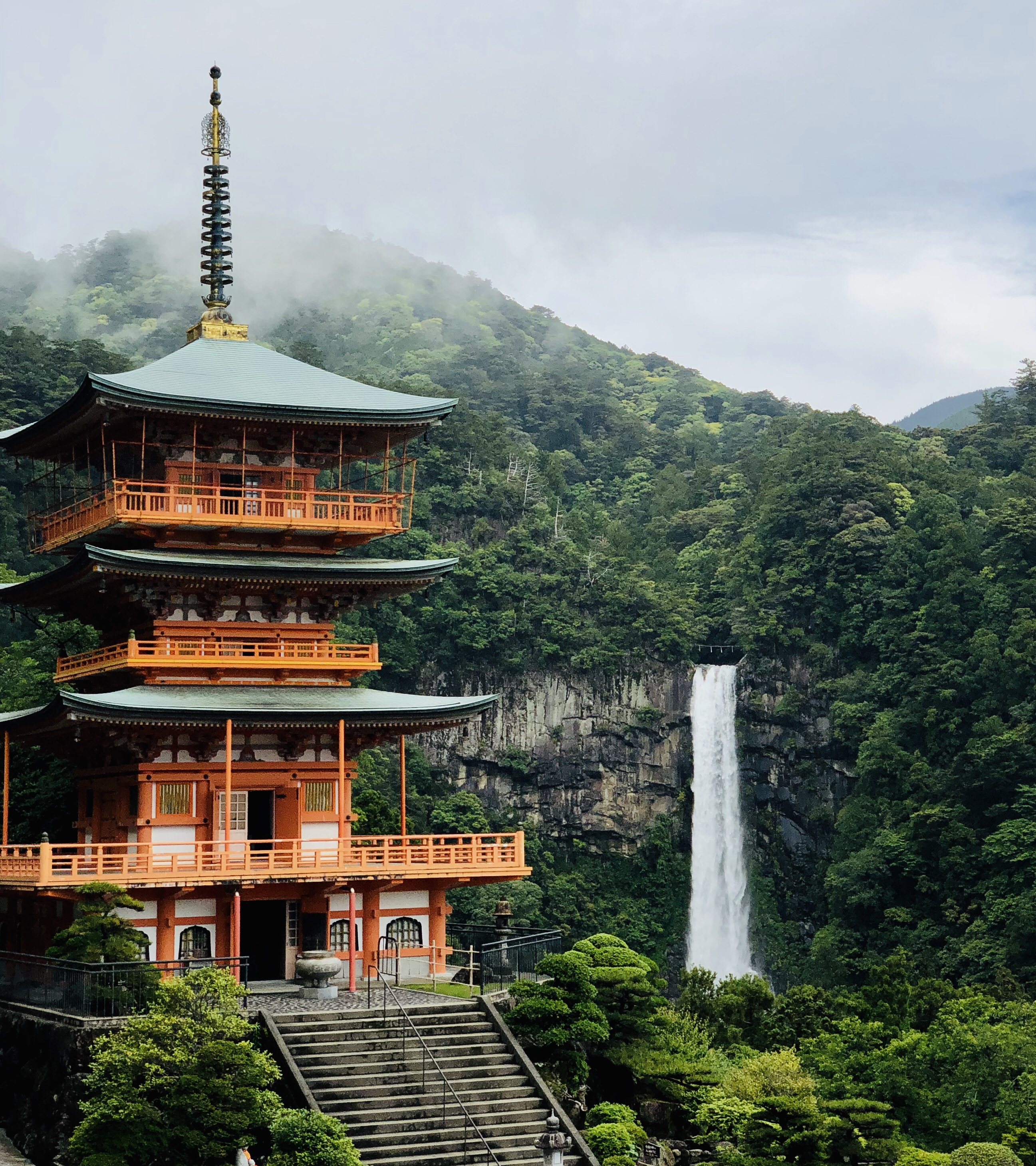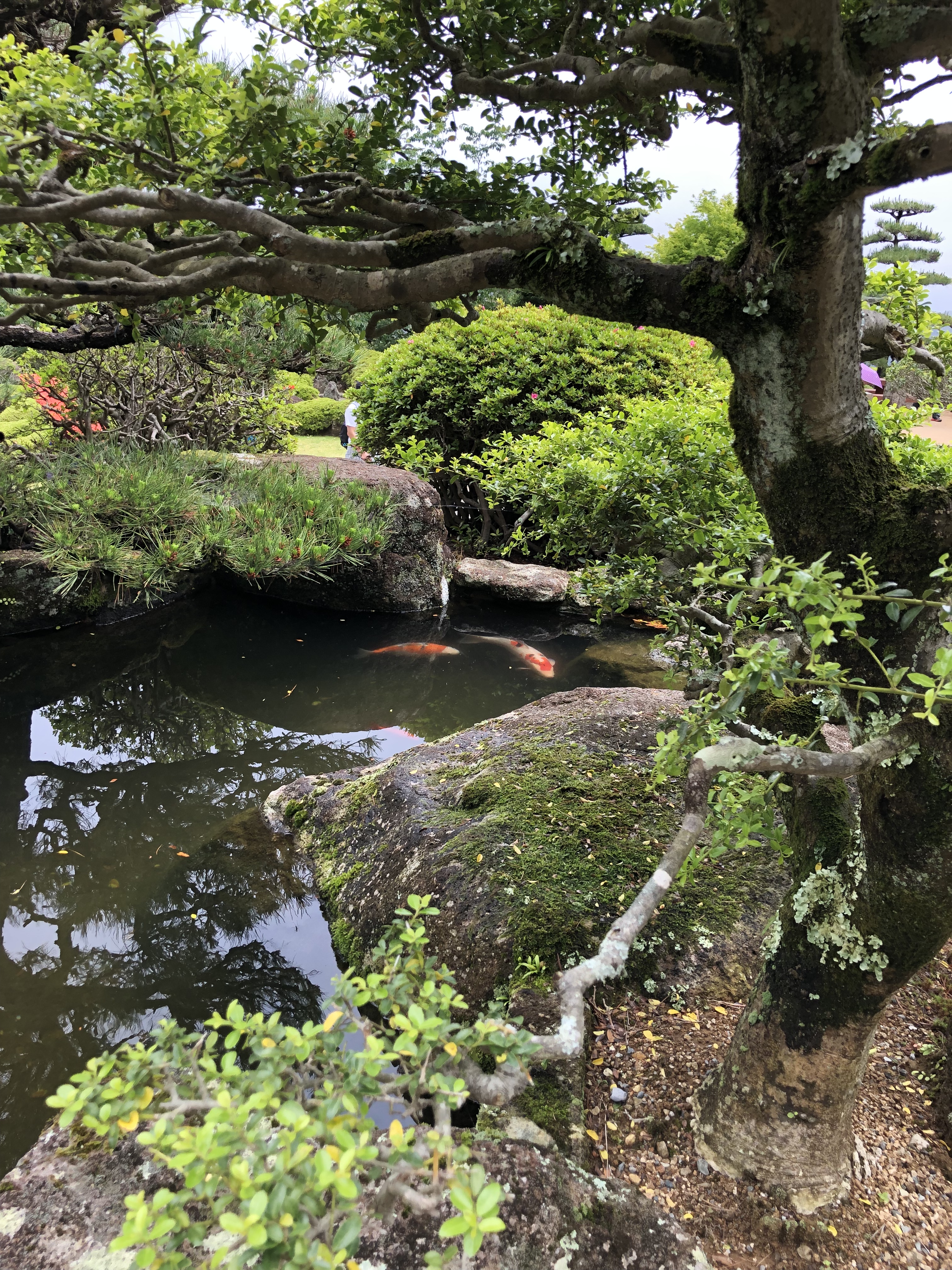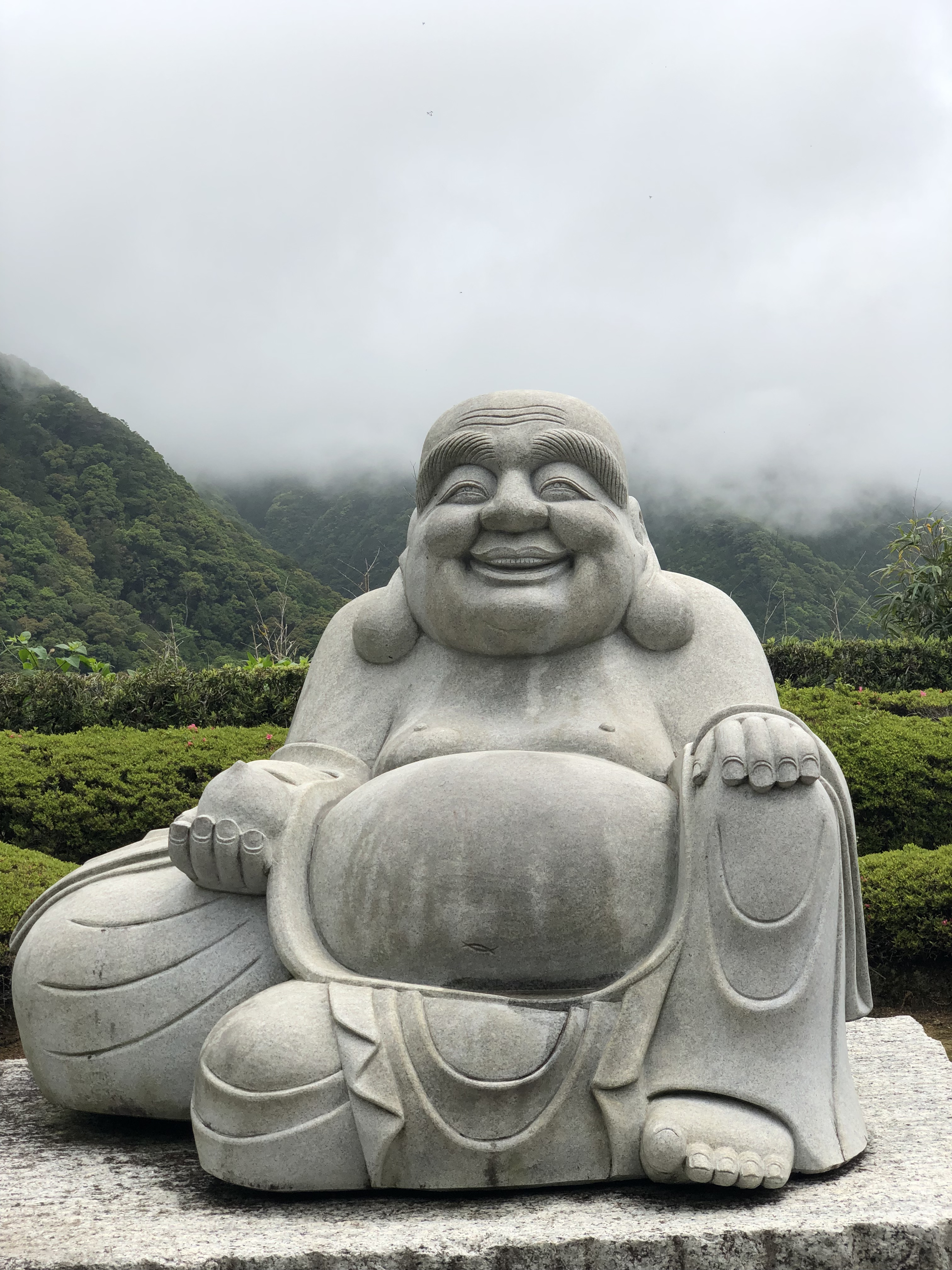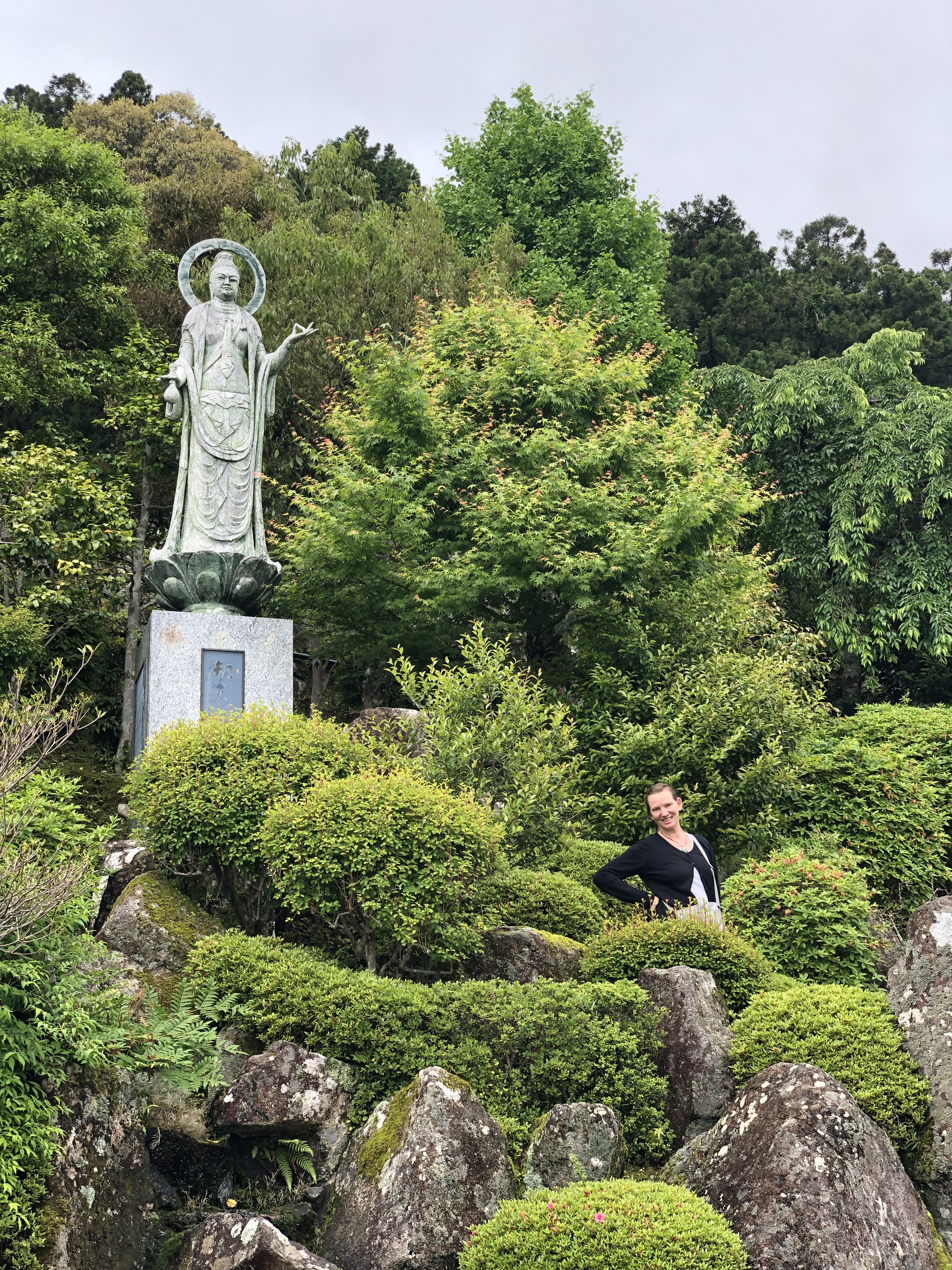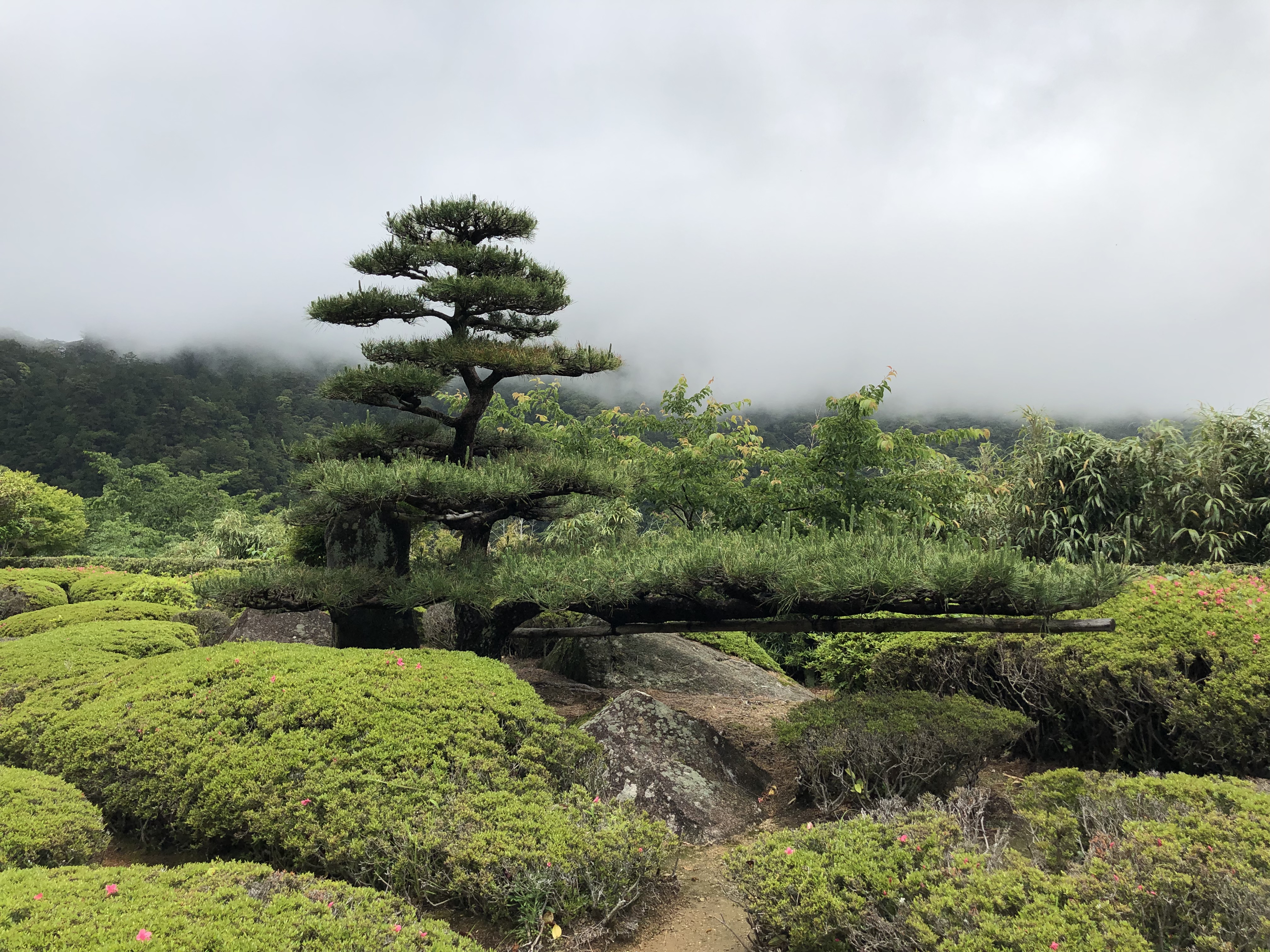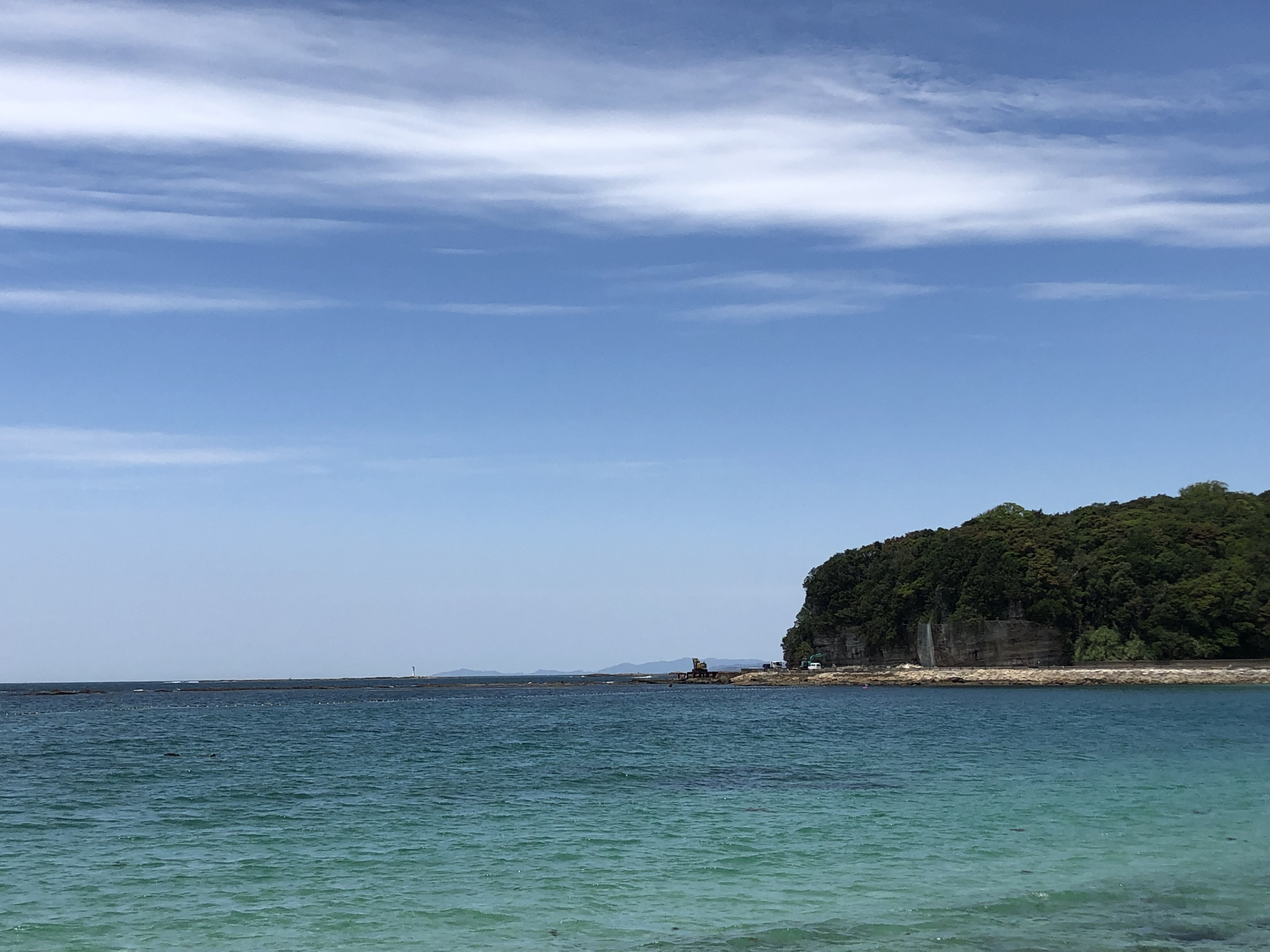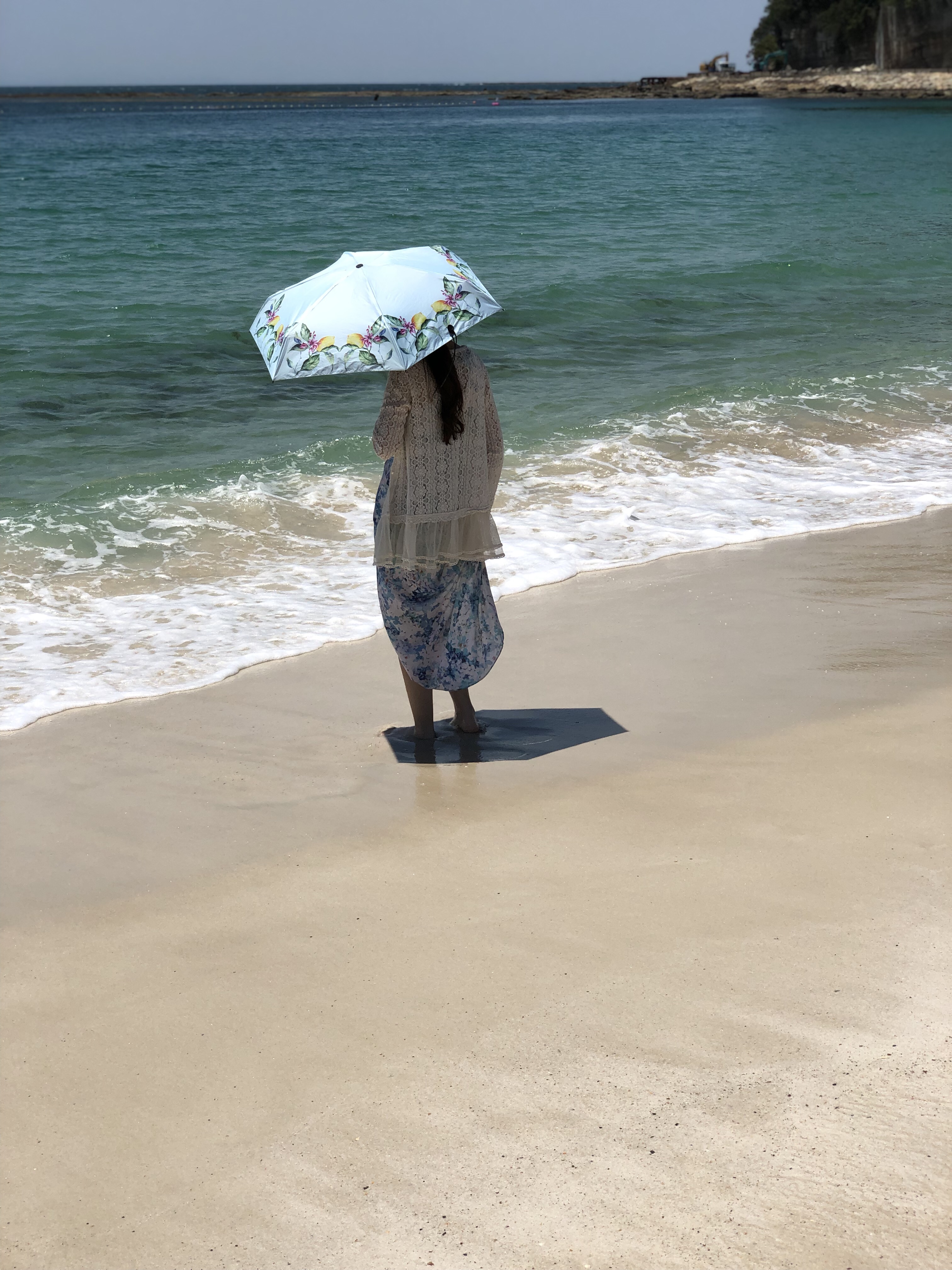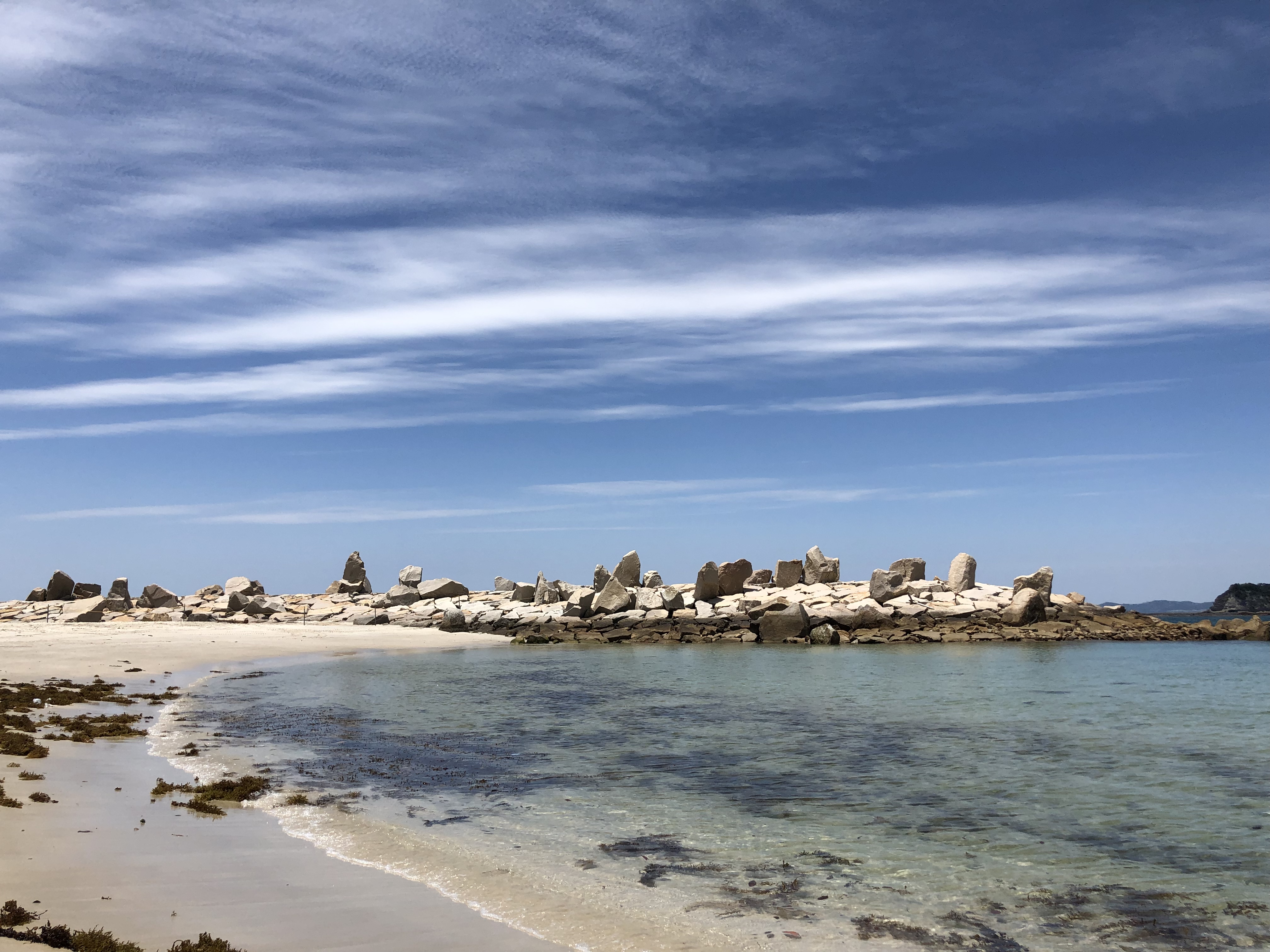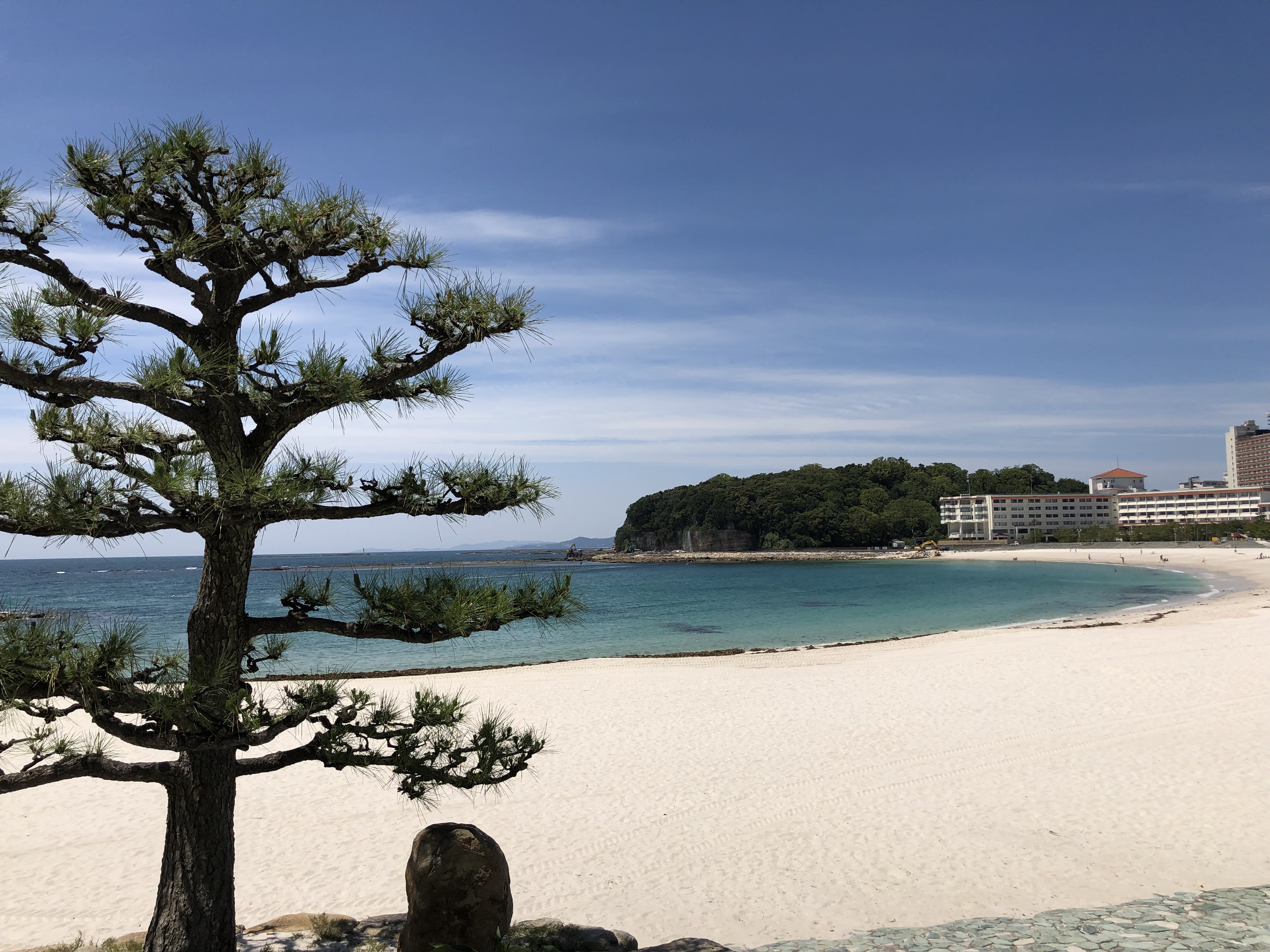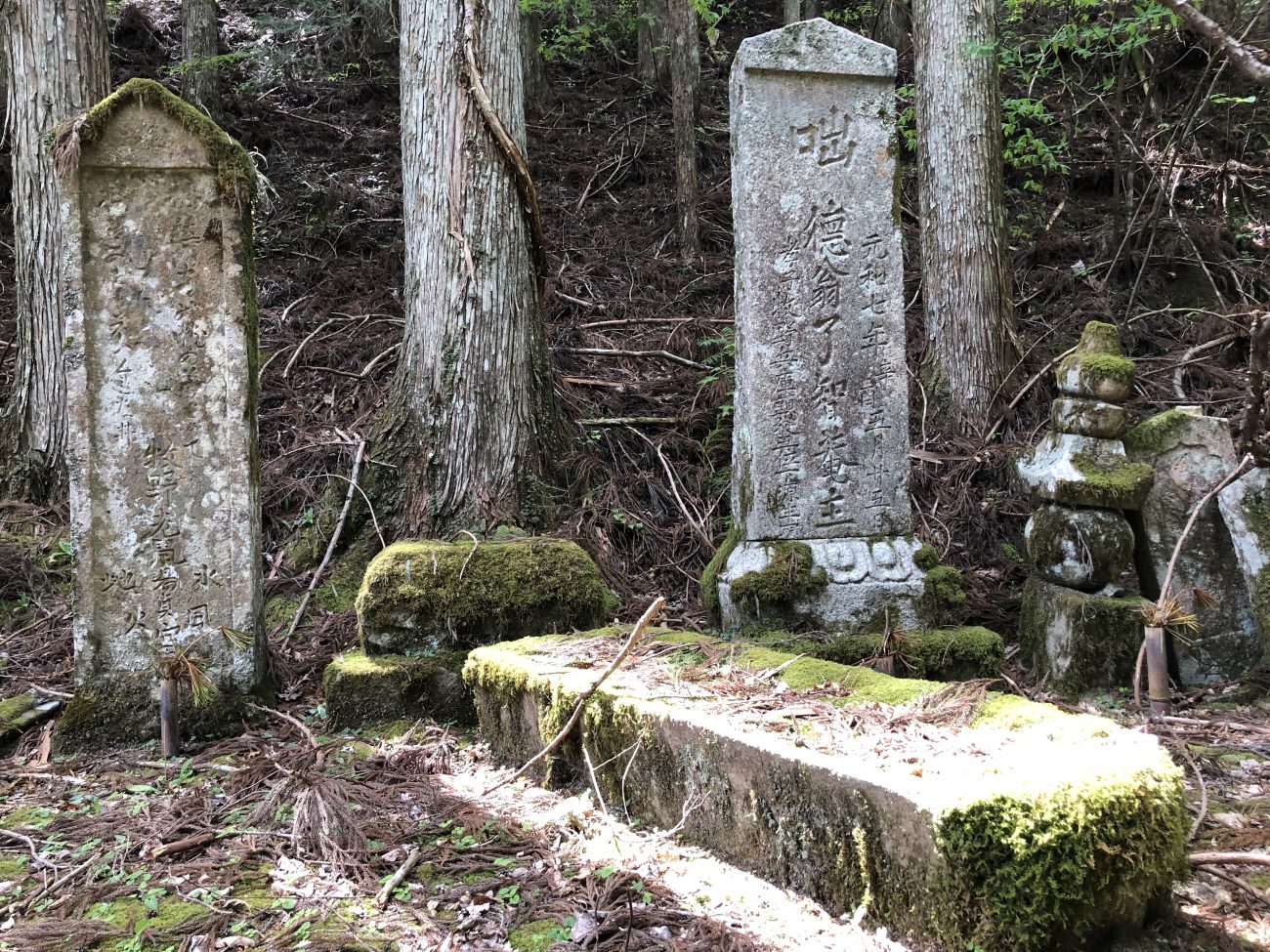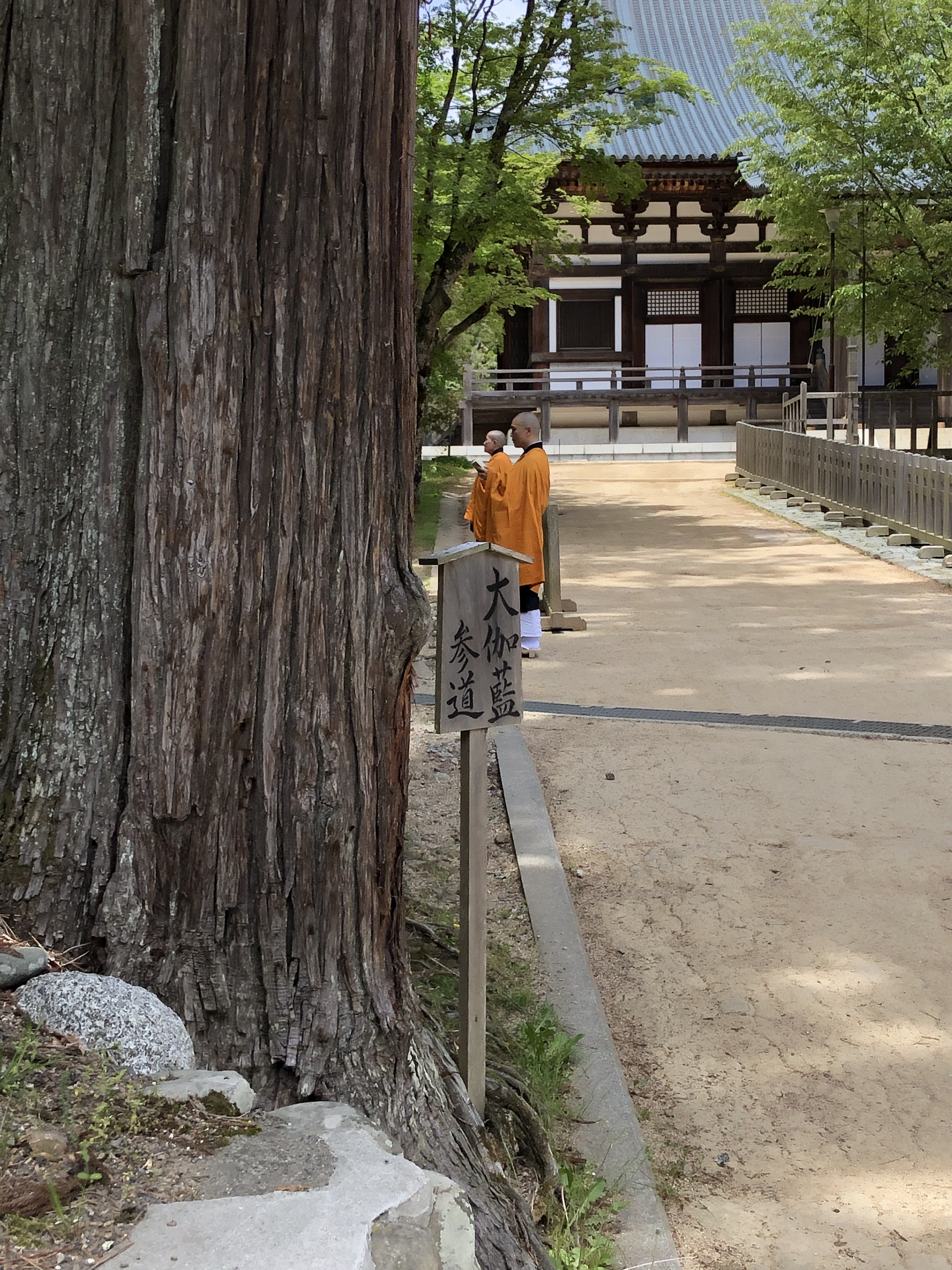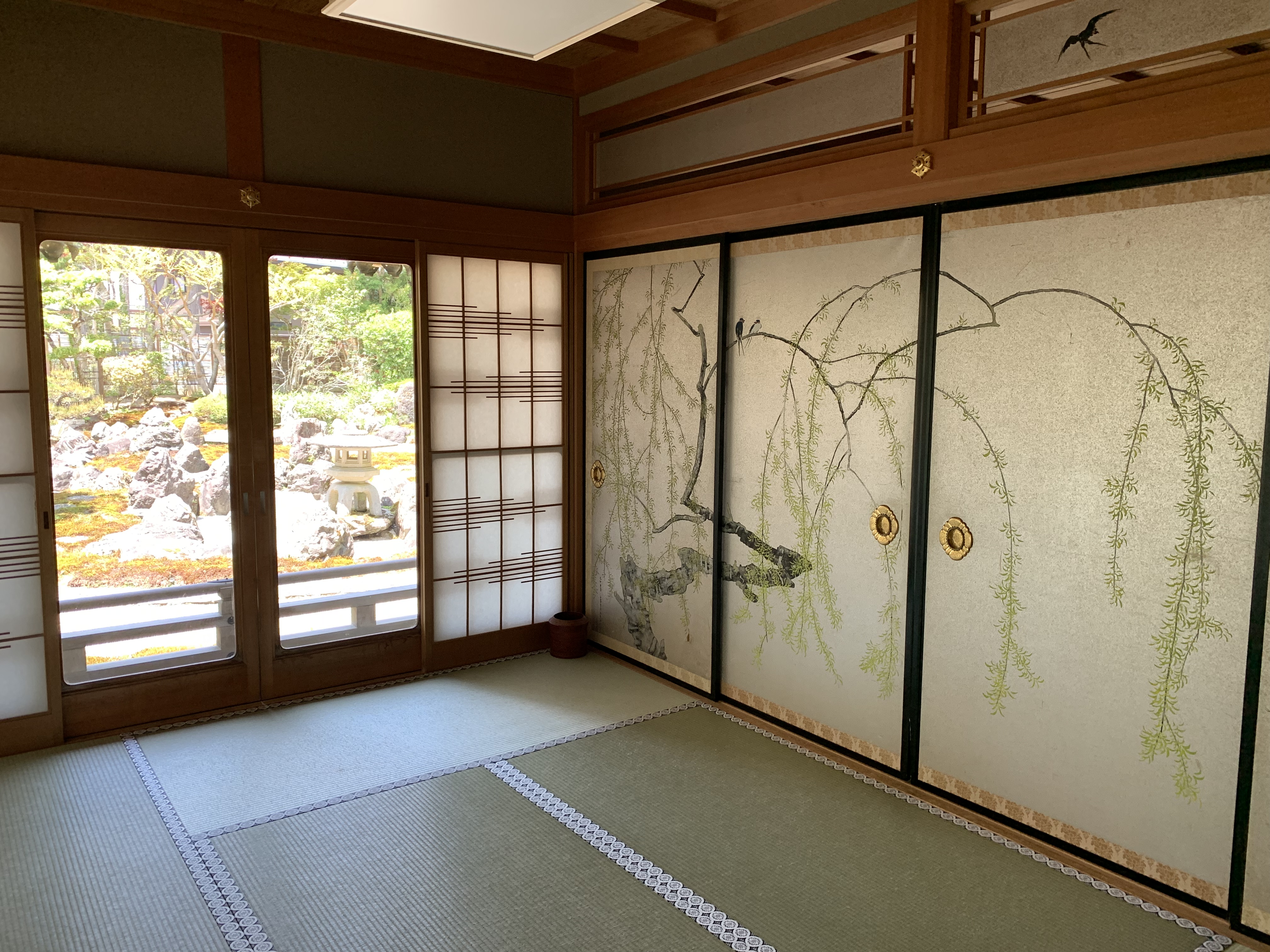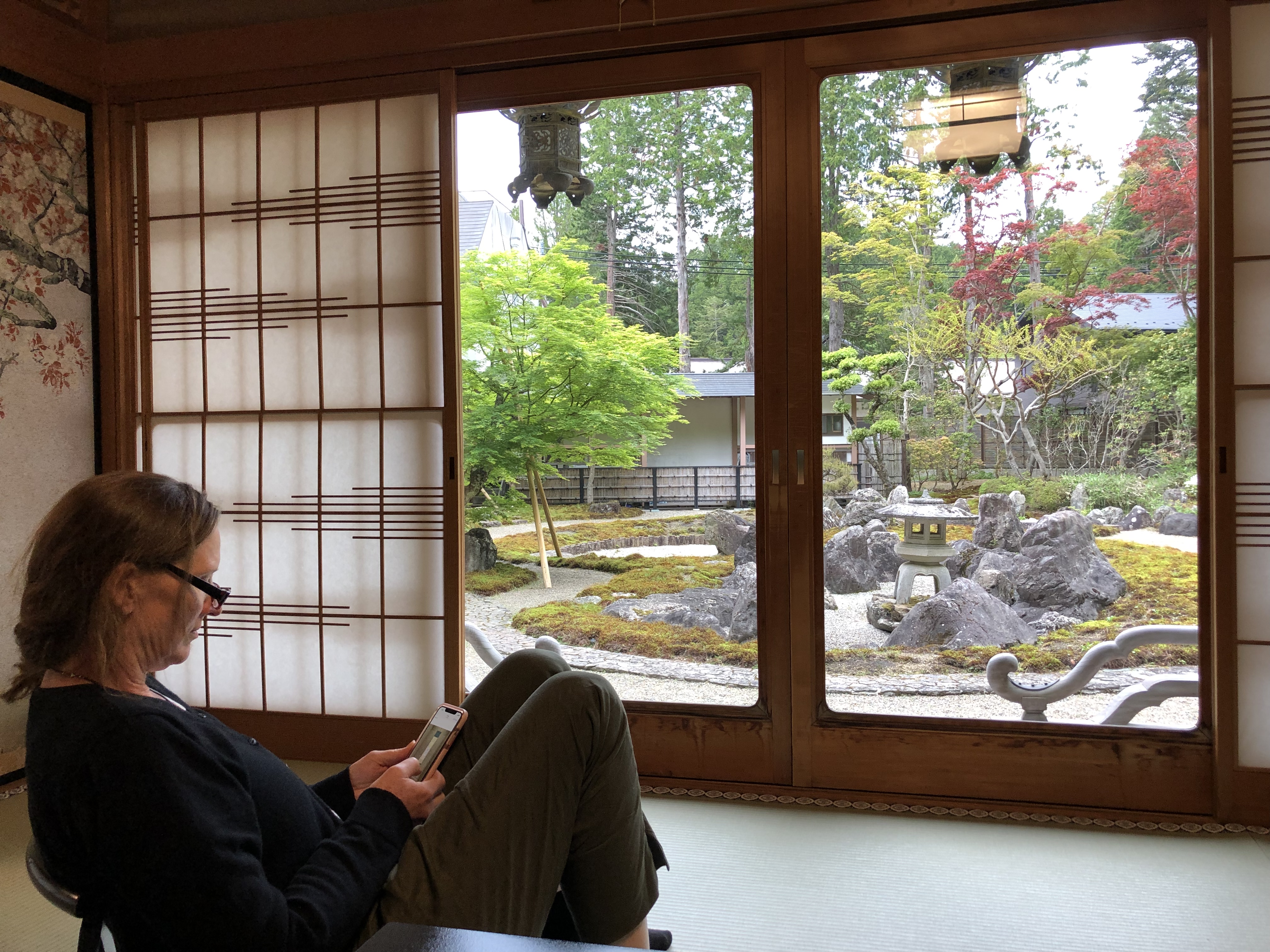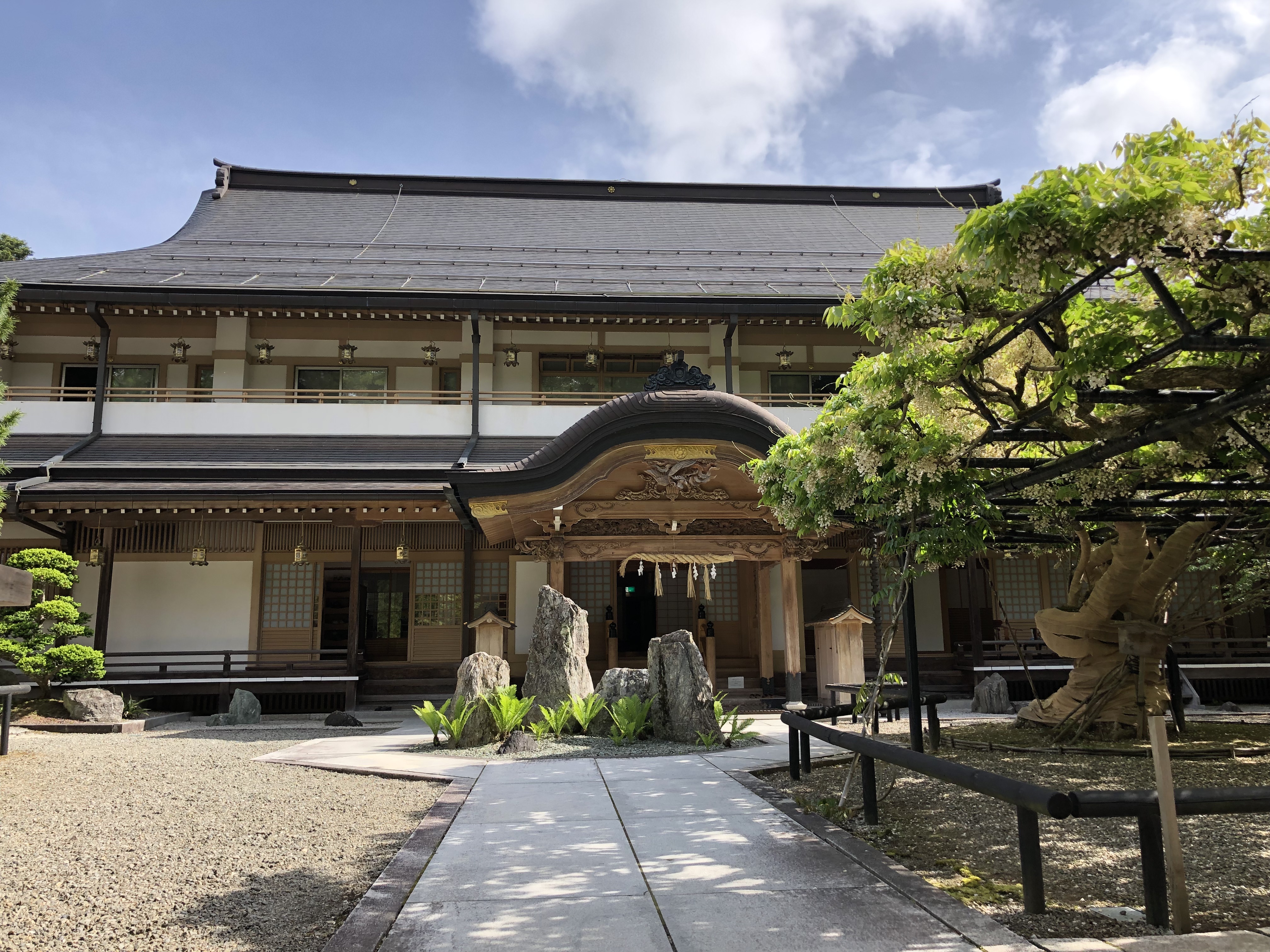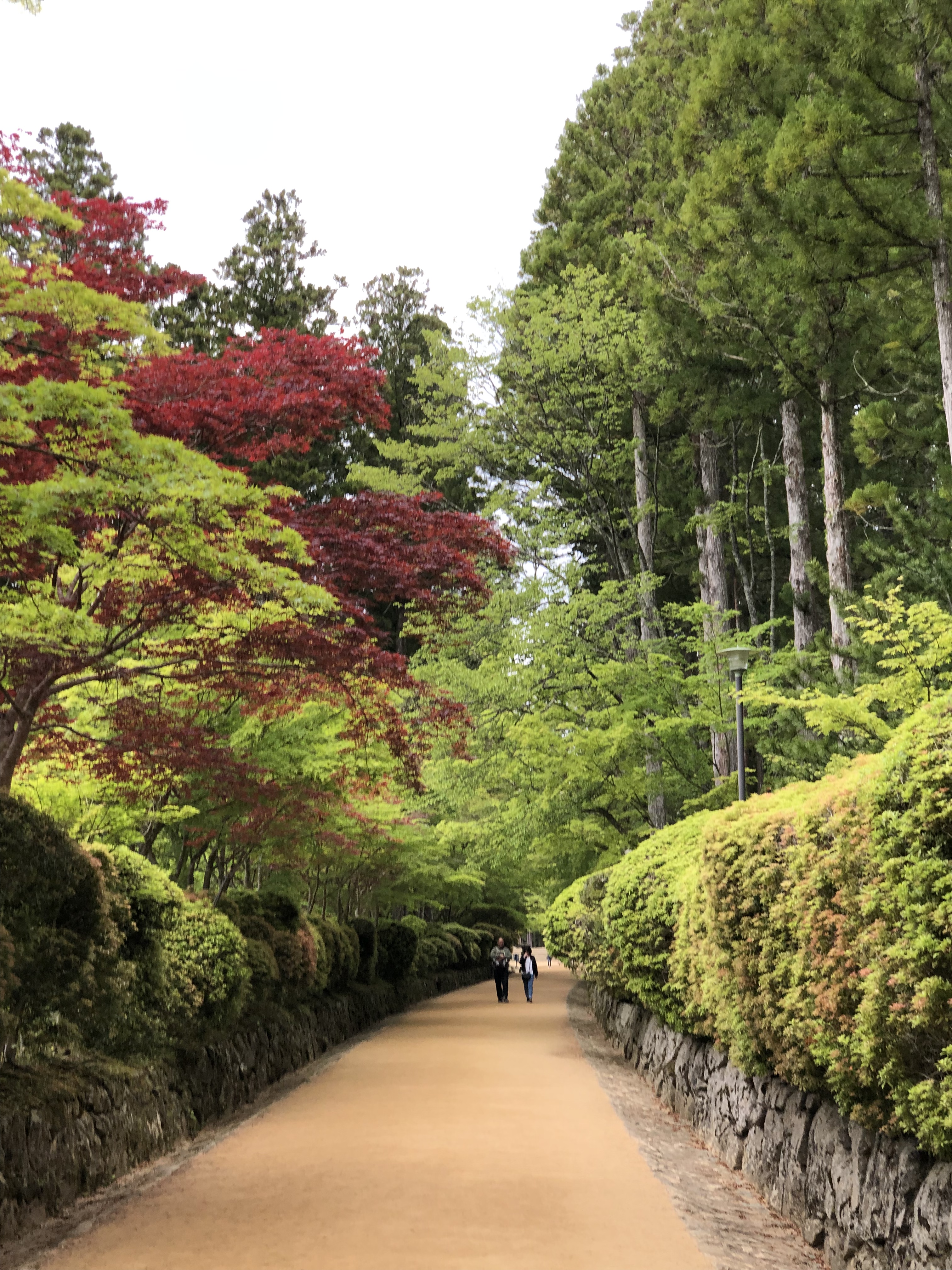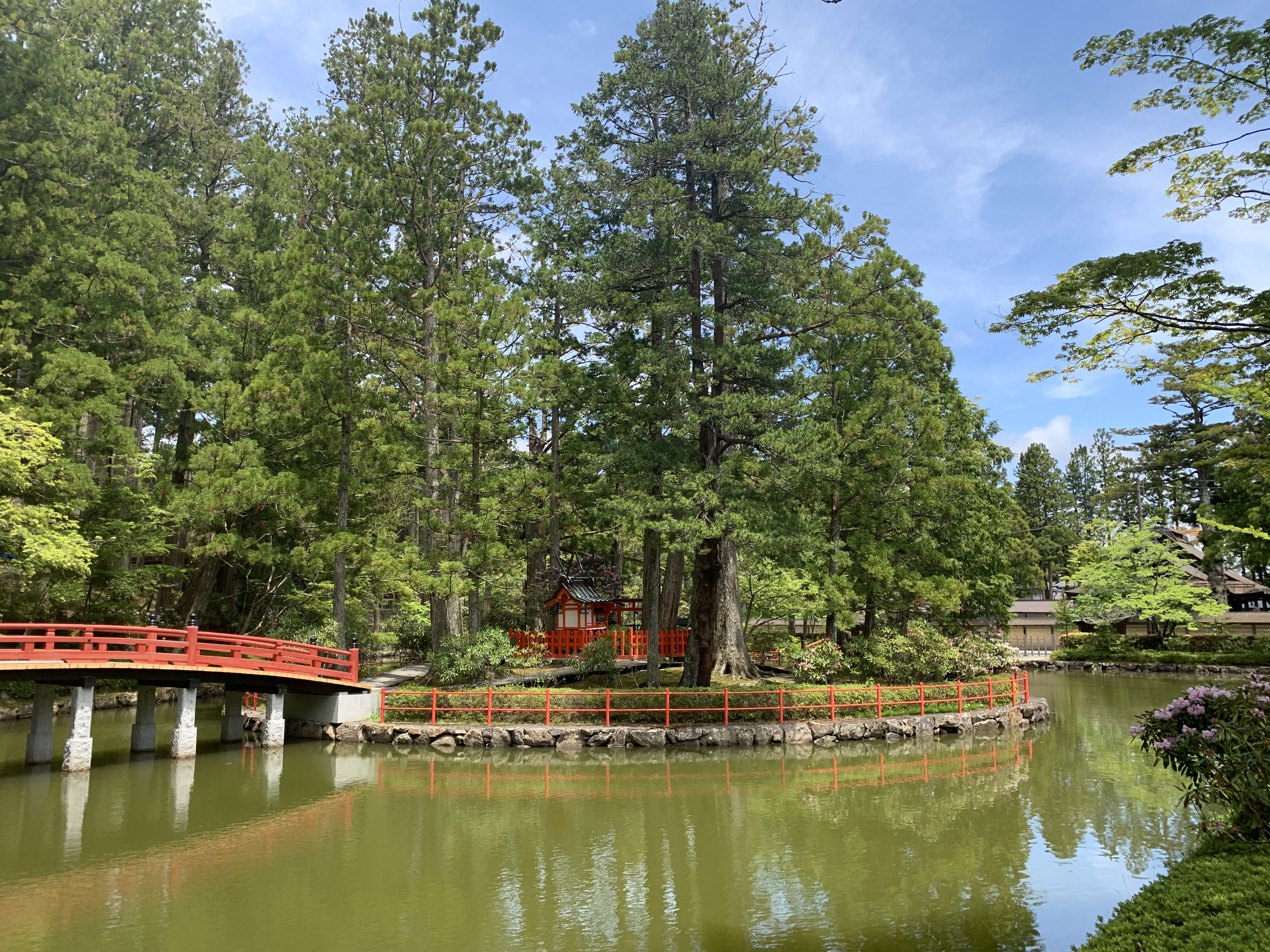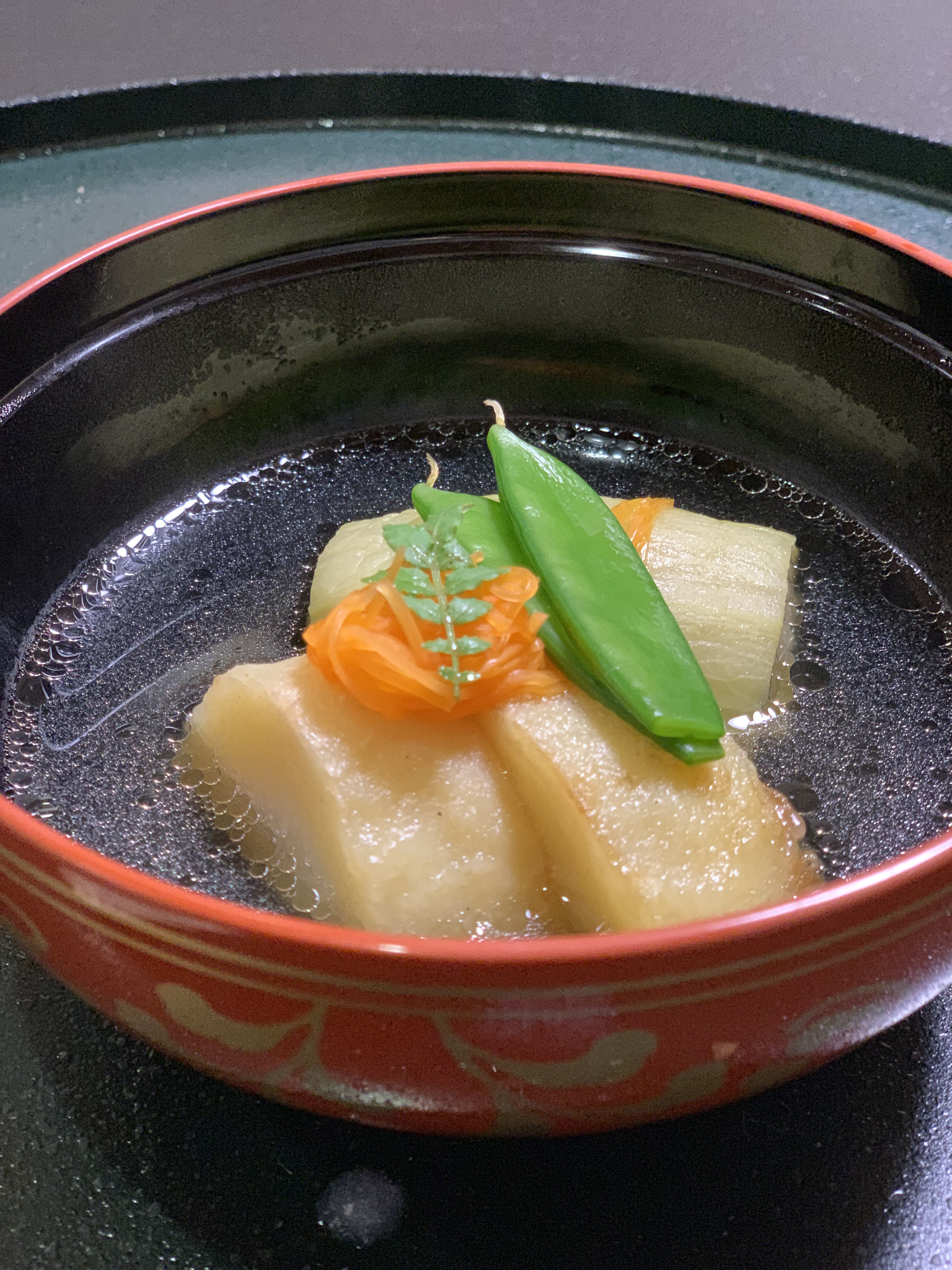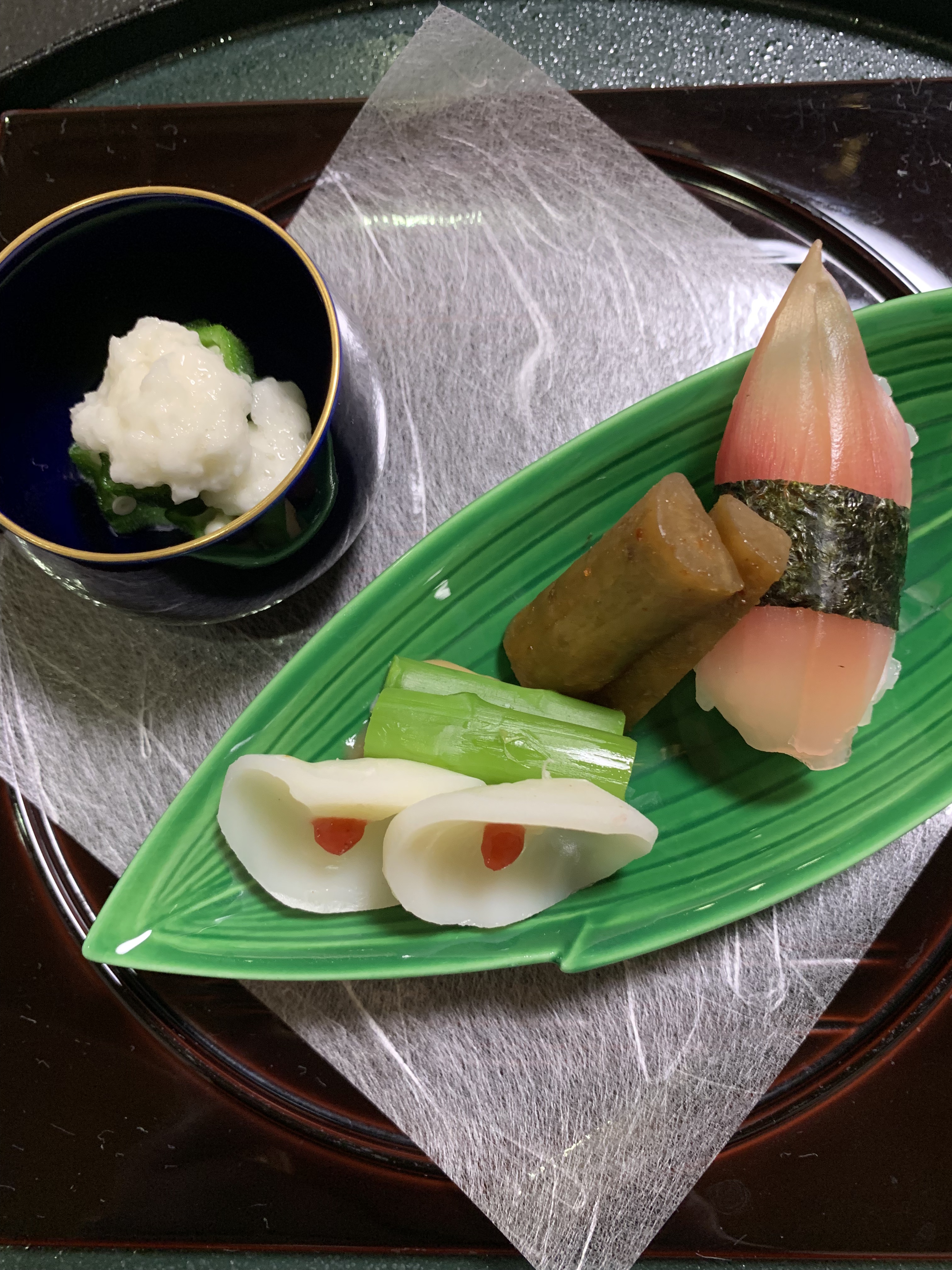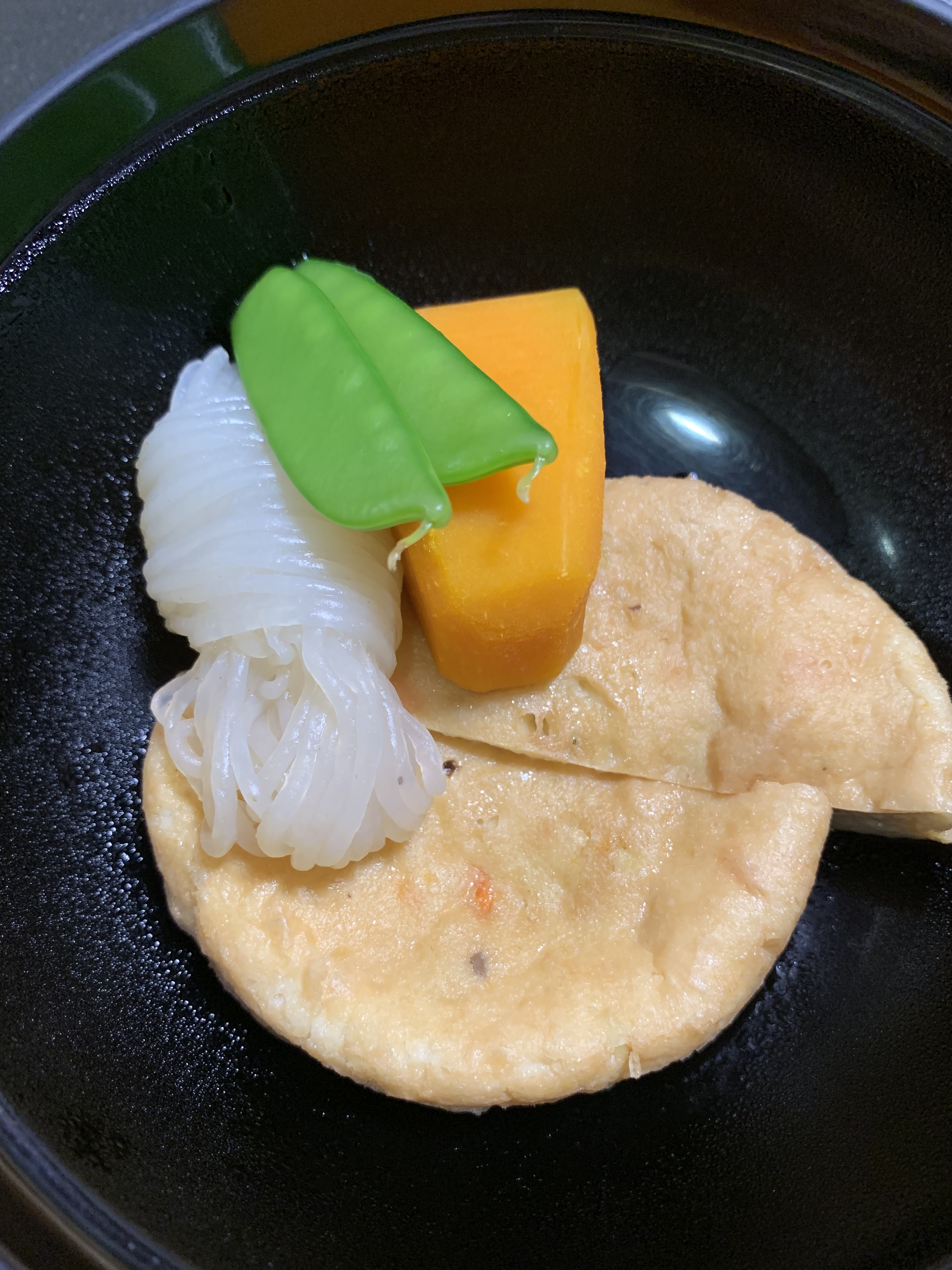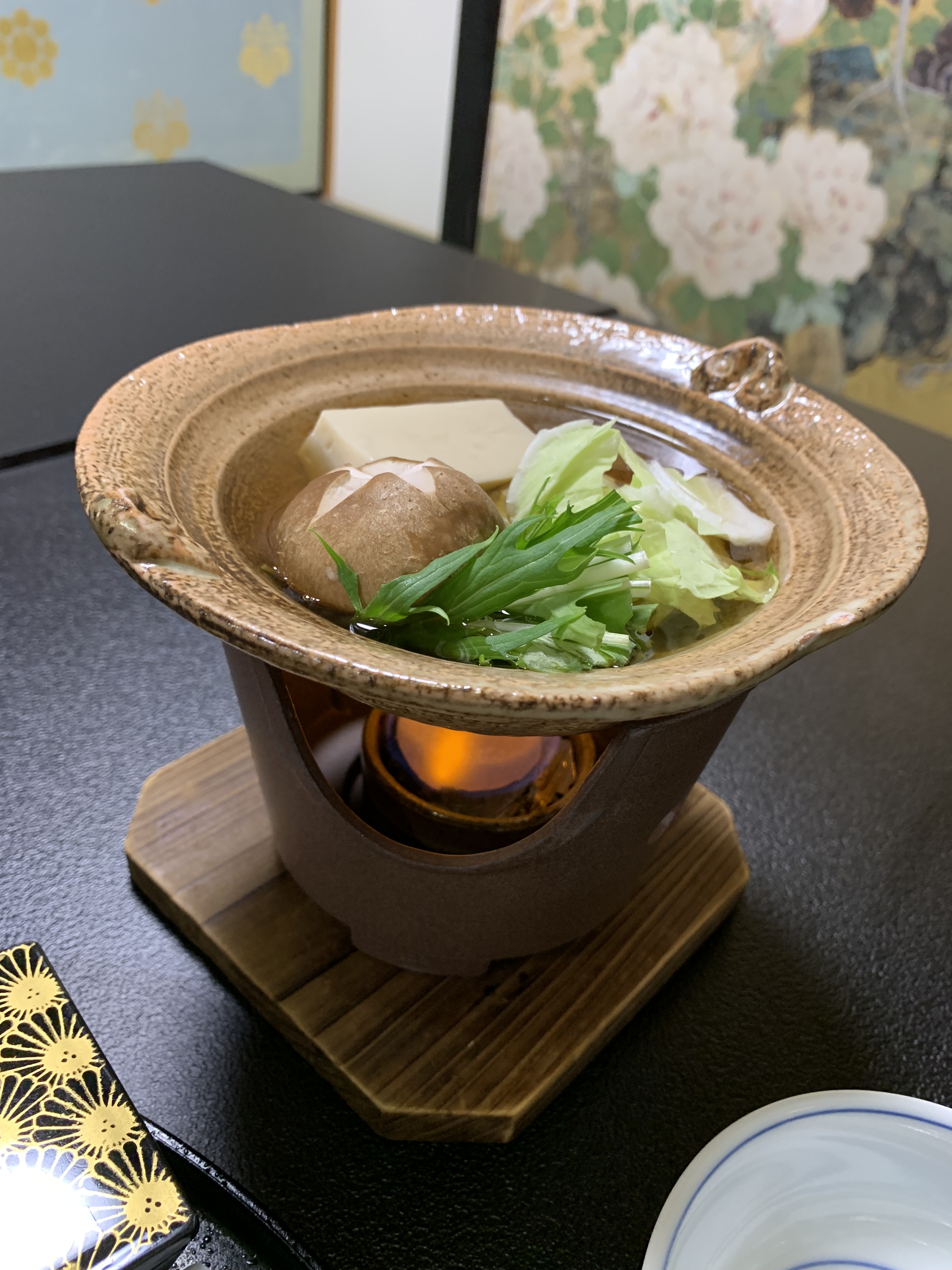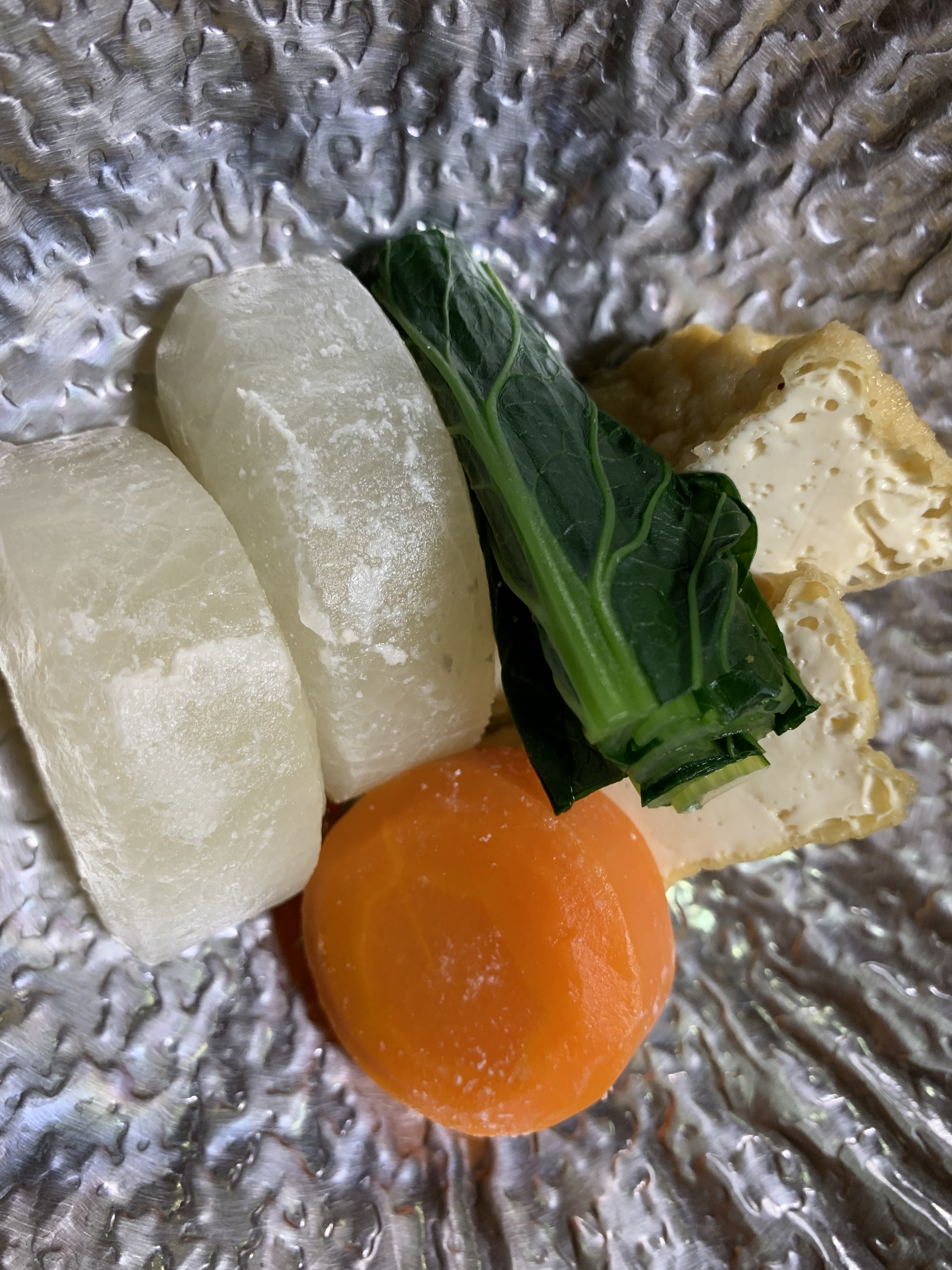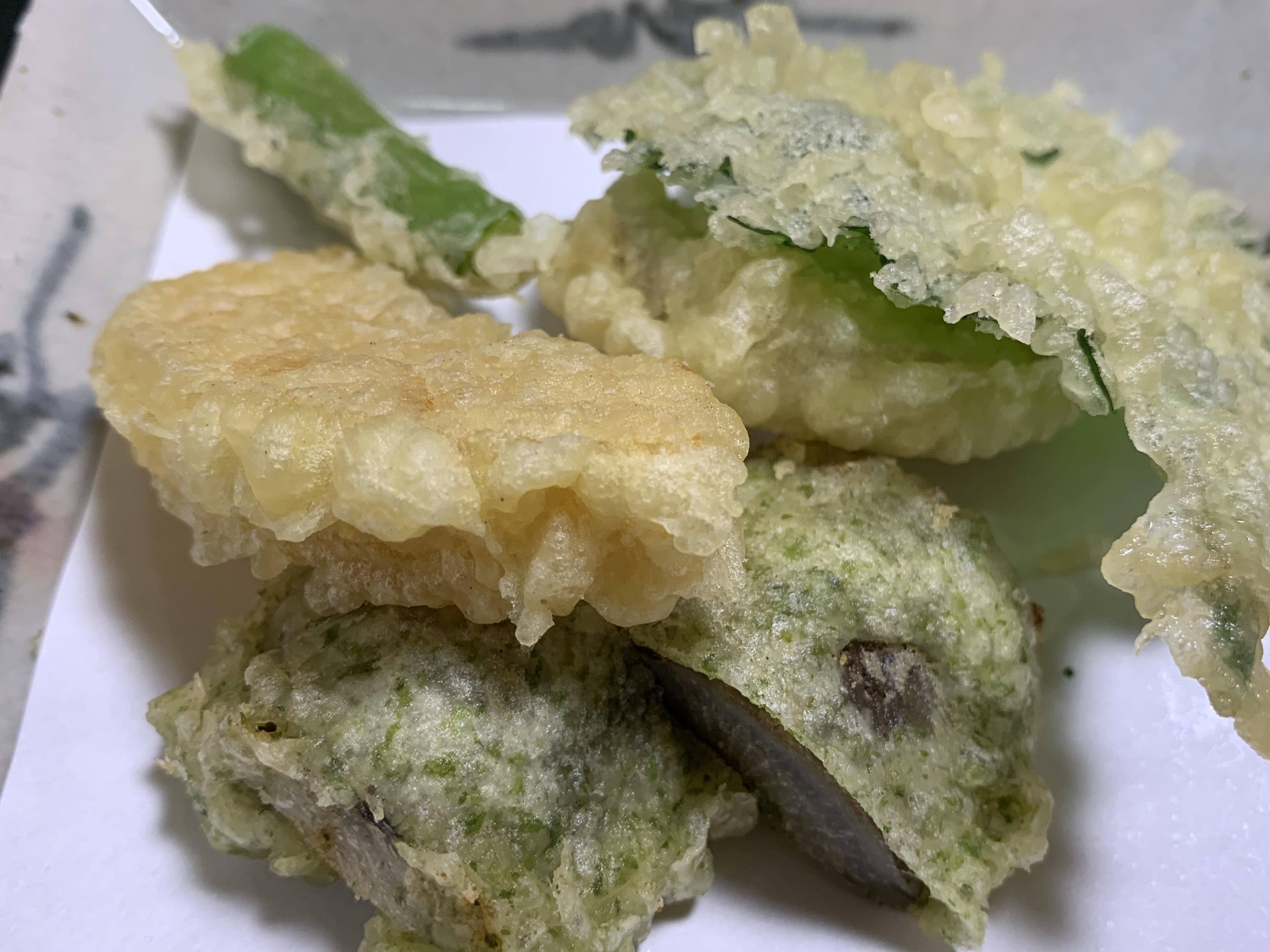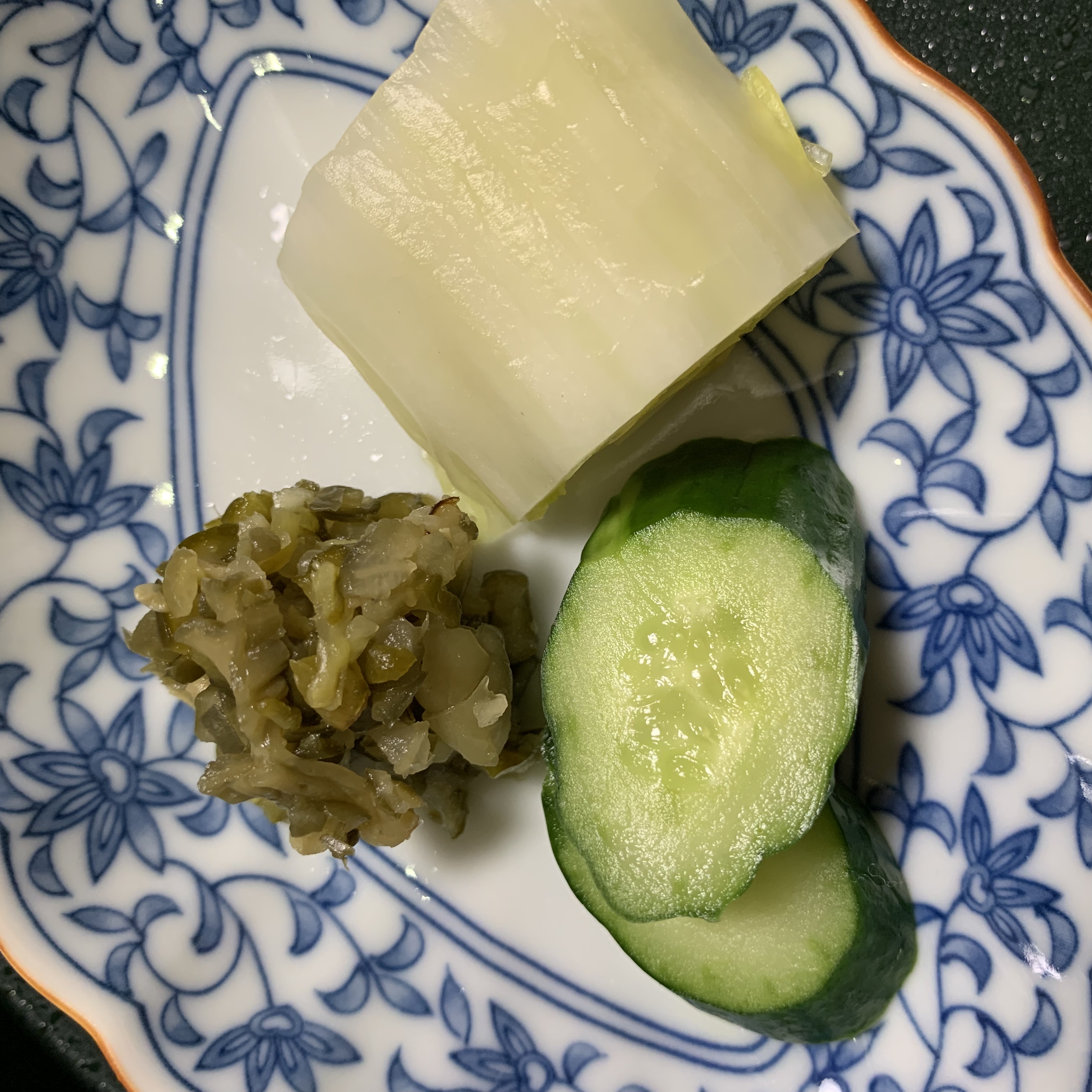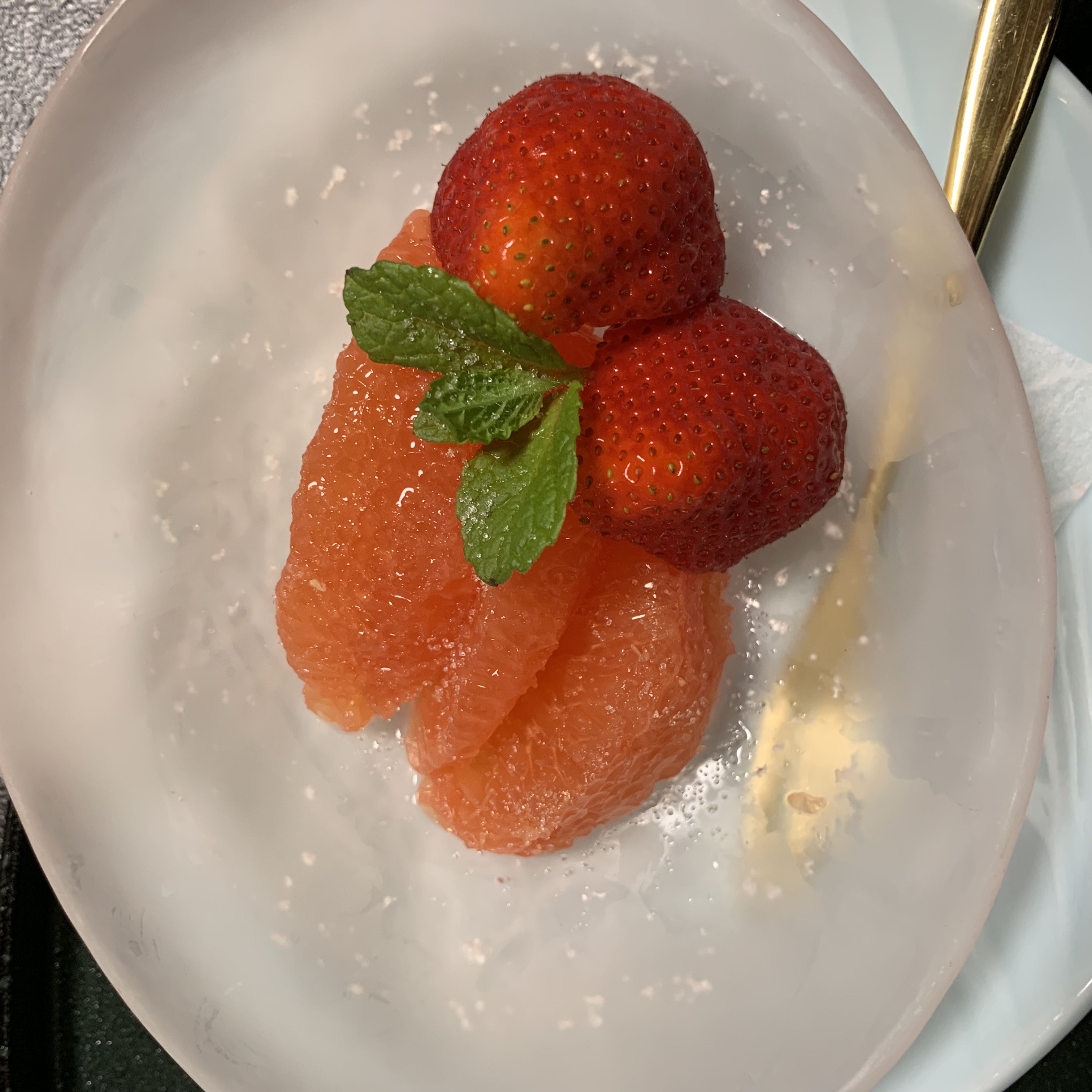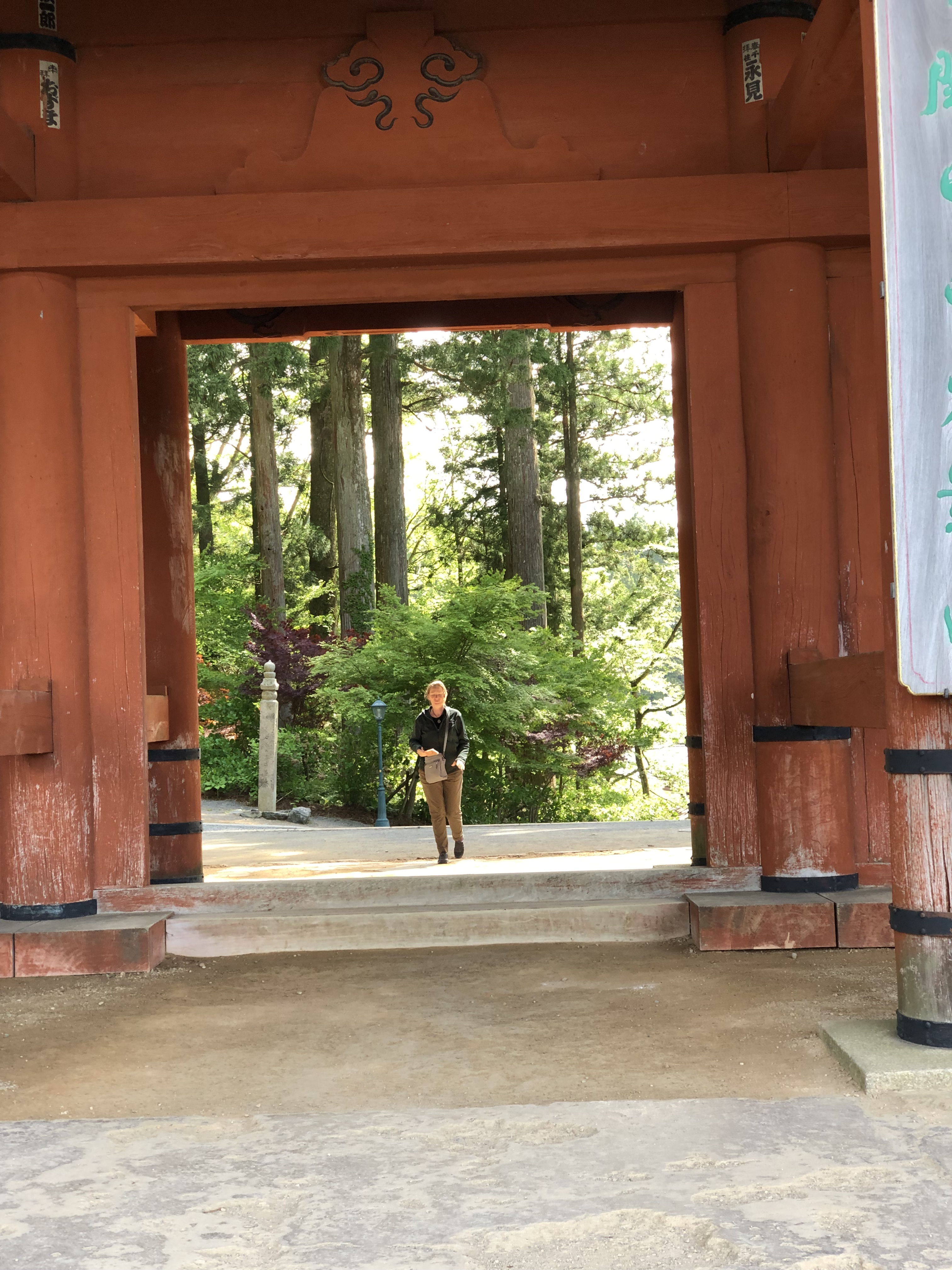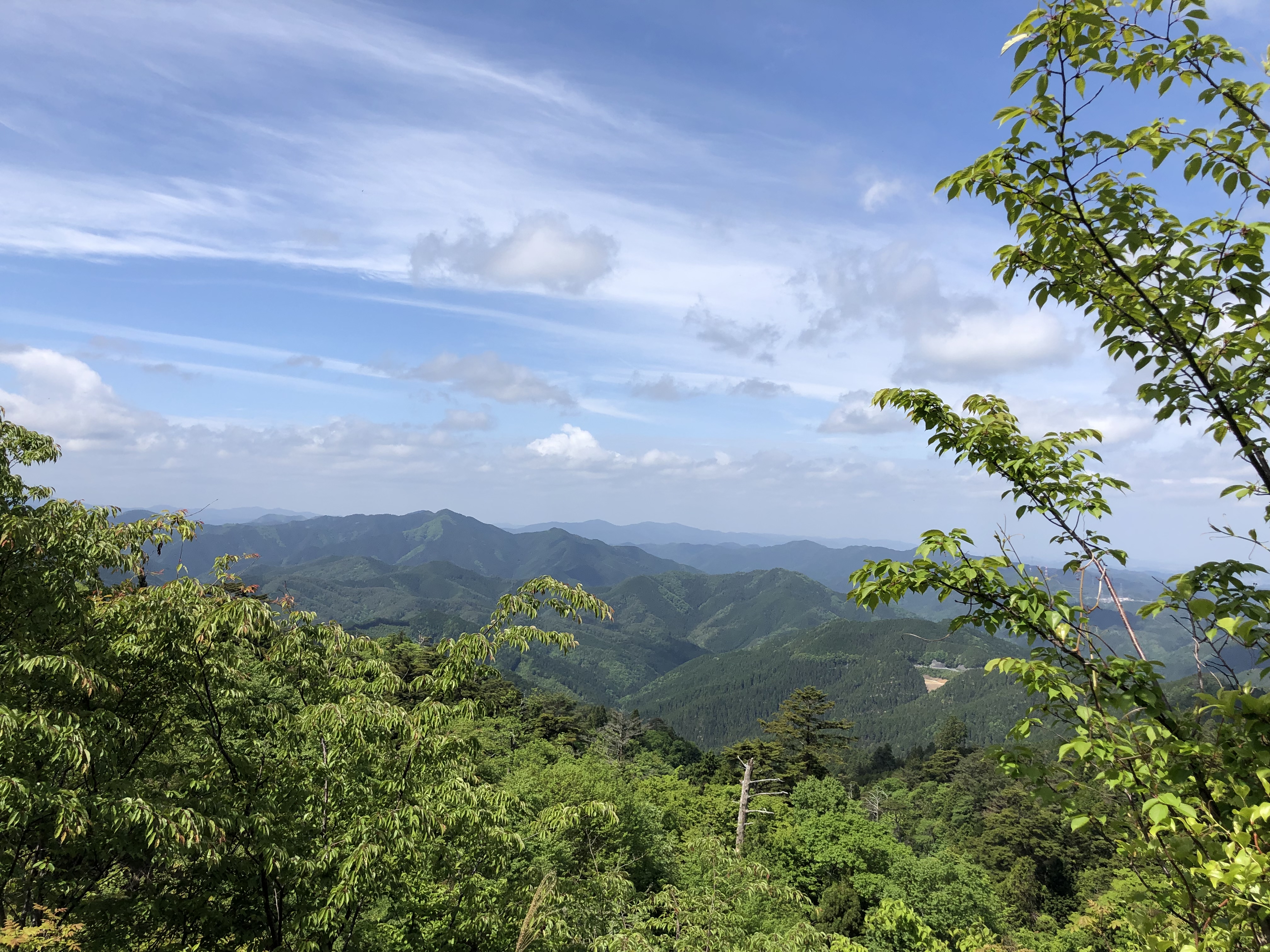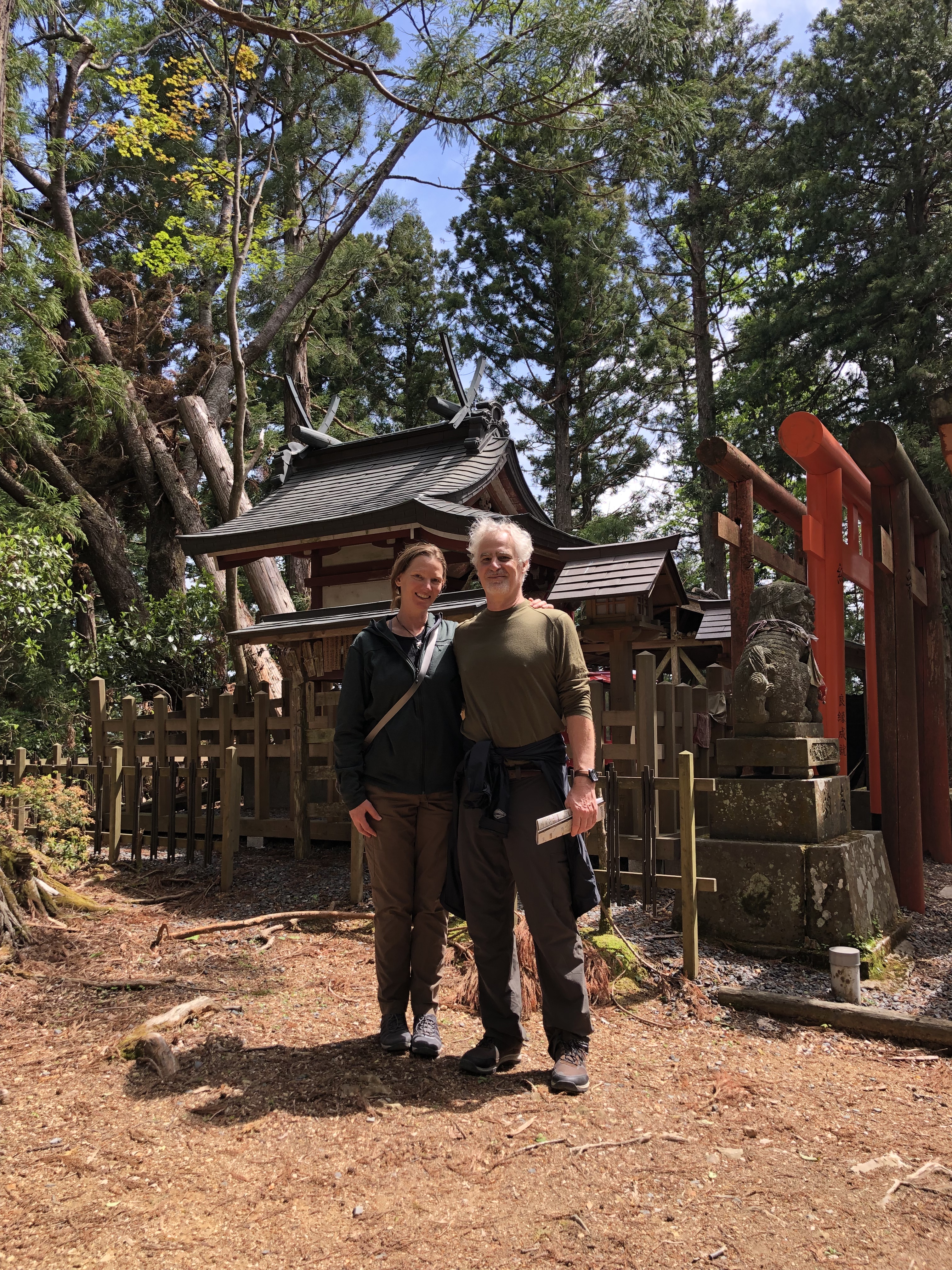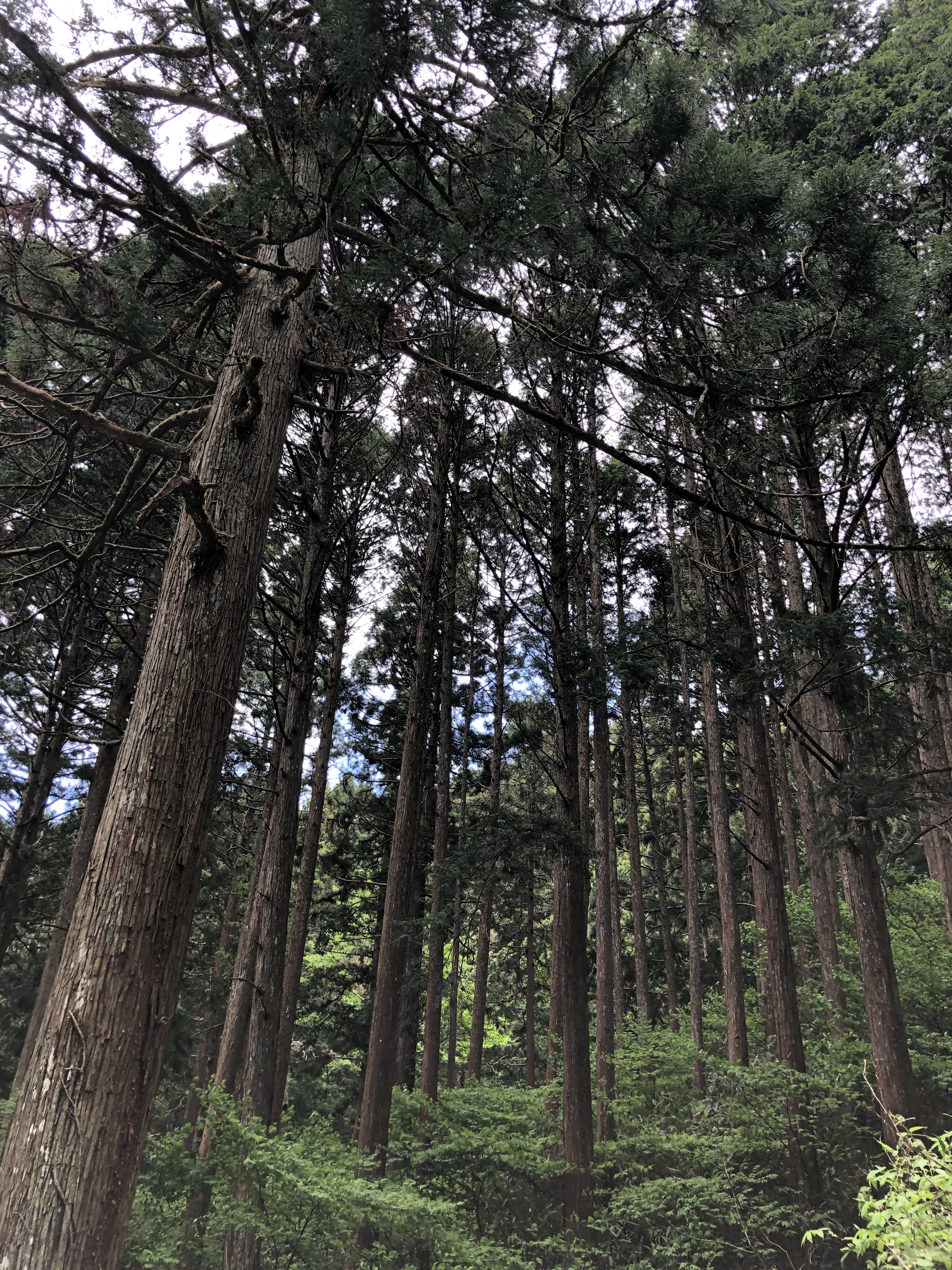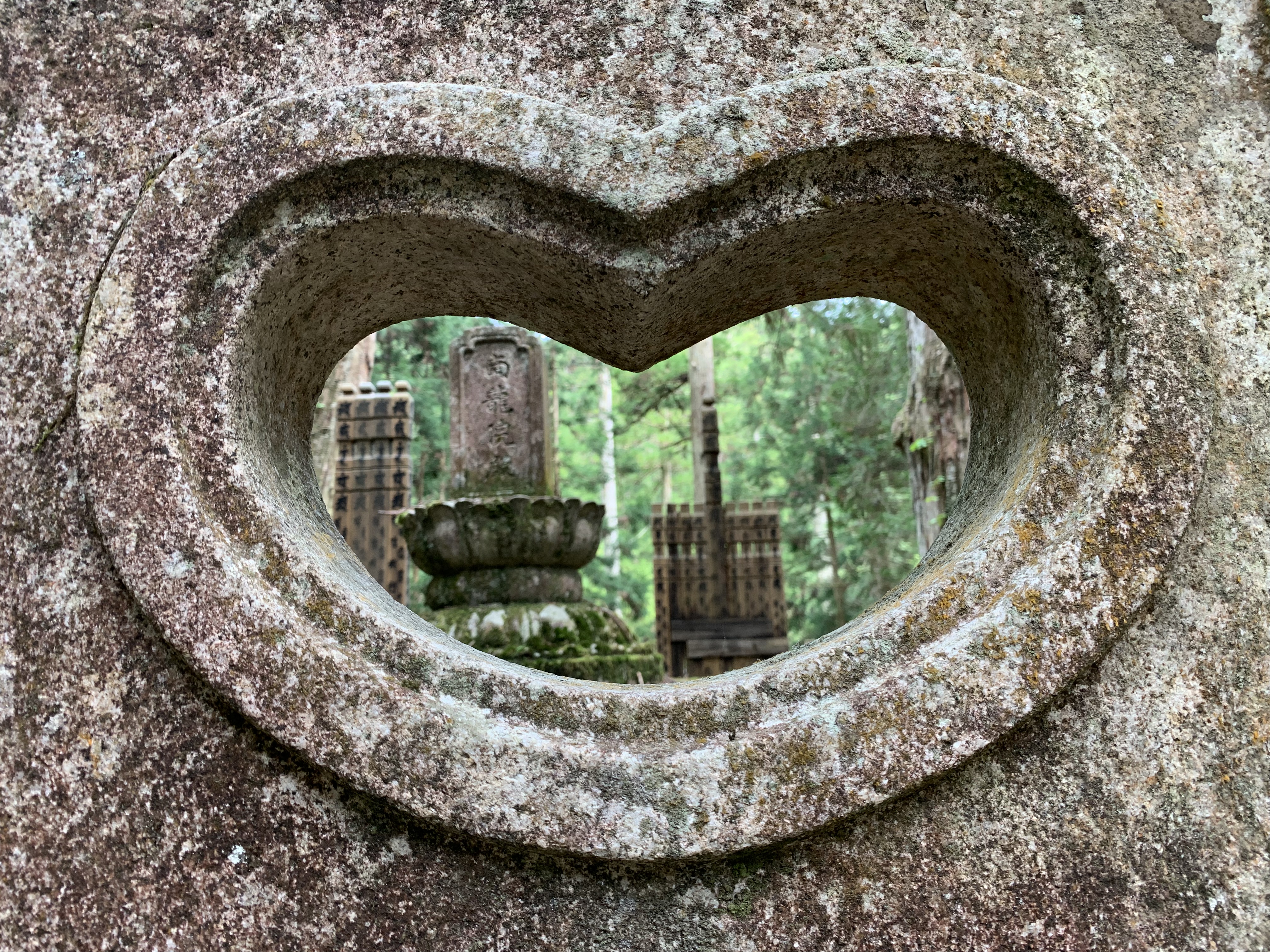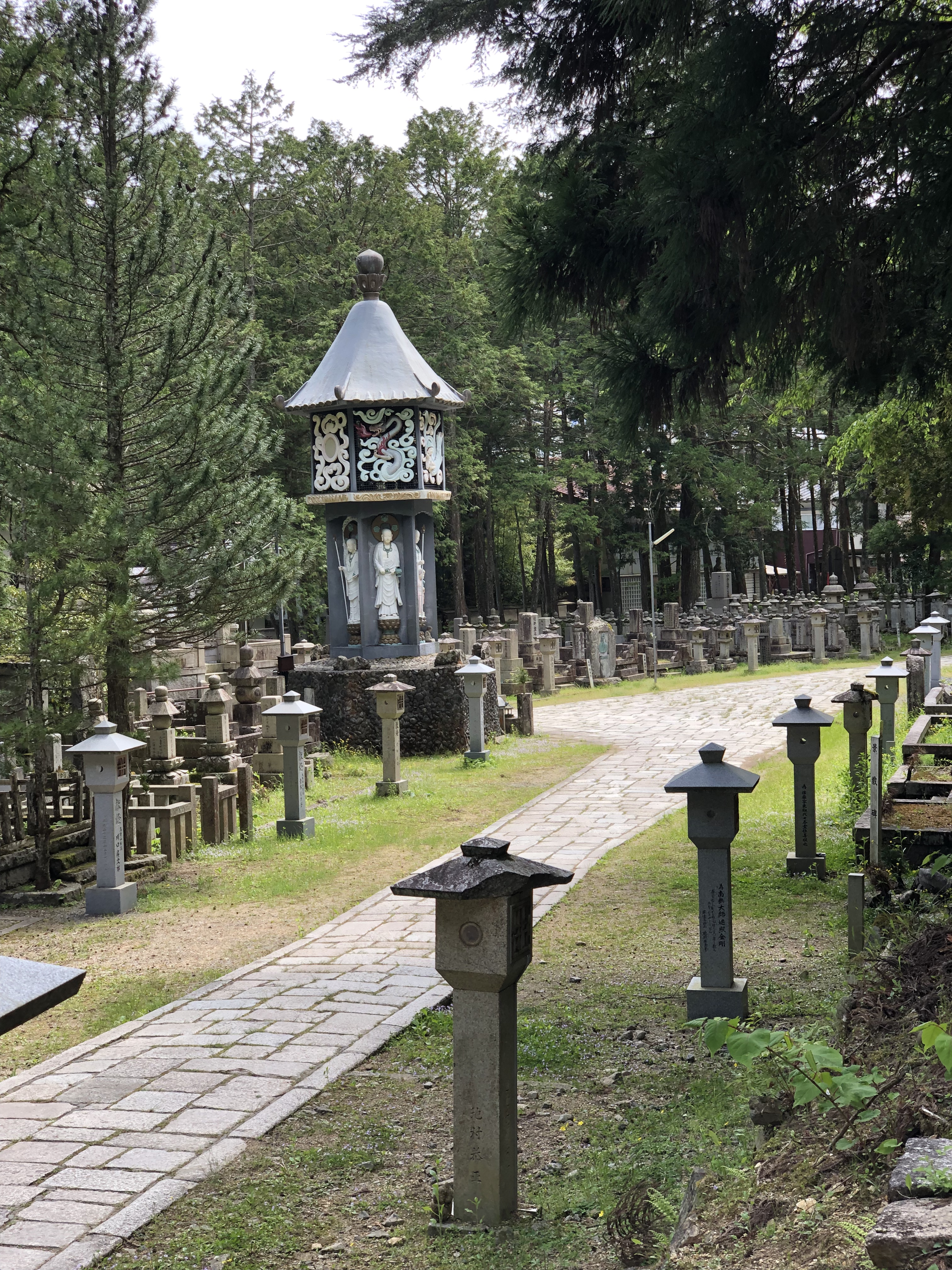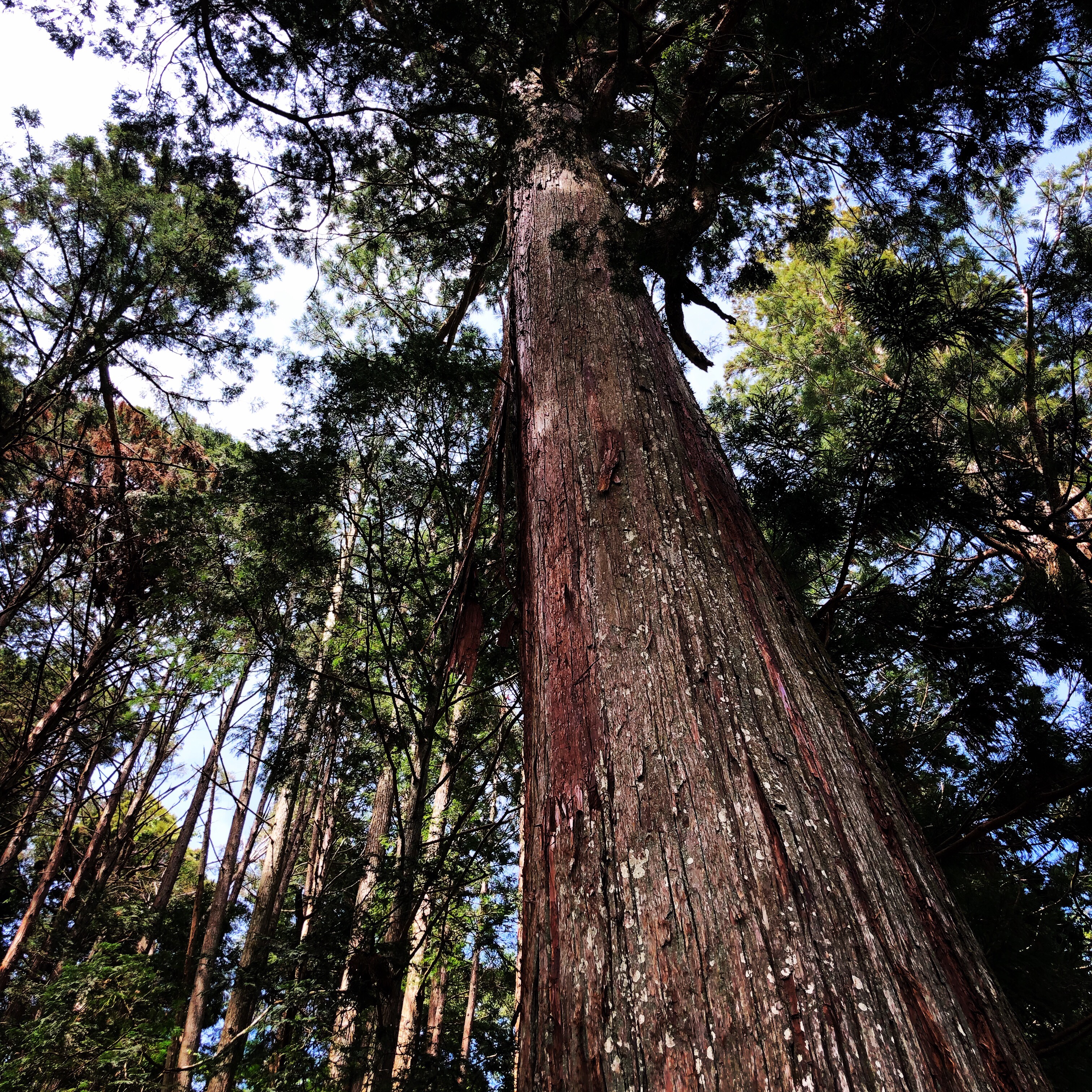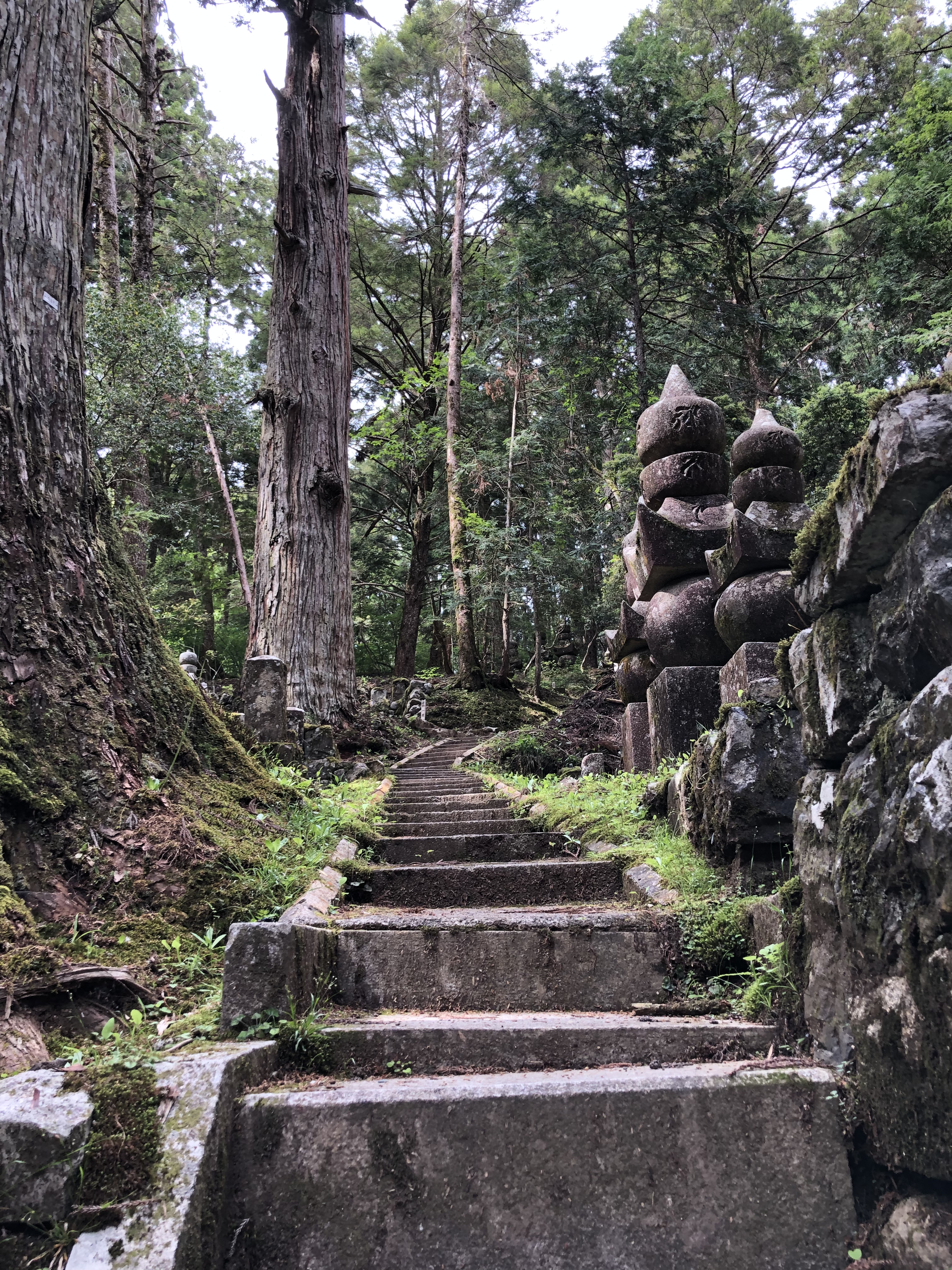From Mr. Koya, we headed south to the Kumano Kodo (Kumano Old Road). This ancient pilgrimage route is a network of wooded trails, some UNESCO-protected, that is steeped in Shintoism, which predated the introduction of Buddhism to Japan in the mid-6th century.
We stayed in Hongu, a midway point along the route, for two nights. Heavy rains blanketed the area when we arrived at the Watarese Onsen hot spring resort, part of a three-hotel complex. The highlight was a set of large outdoor, private onsens that we reached by walking over a narrow suspension bridge that was lit at night. It was mid-May, but not busy at all, and a relaxing soak was just what we needed after the drive–and several times after that.
Nachi Taishi Shrine and Seinganto-ji Temple
The next morning (with rain threatening) we drove east to Shingu and then inland to Nachi Taishi, one of the primary destinations along the route. Parking was easy, the crowds were light, and we walked a short, but beautiful stretch of one of the Kumano Kodo paths to the Nachi Taishi Shinto shrine and the Seinganto-ji Buddhist Temple.
Mist covered the mountain peaks as we continued on to the three-storied pagoda, resting near the Nachi-no-Taki waterfall, the tallest in Japan. The pagoda is the first “etiquette place” of the pilgrimage around the 33 holy places in the area, and it was a sight we had anticipated seeing for months.
Around the pagoda was a koi pond, gardens, buddhas and a stone picnic area. The few people there all magically vanished when we sat to have our lunch, as if the Shinto gods wanted us to have a peaceful meal. Seated along the mist-shrouded garden with the pagoda and waterfall before us, we had just that experience.
Saying Good-bye at Shirarahama Beach
Our visit to Japan was coming to an end, and we left the mountains and drove to our hotel near Kansai Airport, where we planned to take the train into Osaka to get a taste of the big city. Instead, we drove past Tanabe to Shirarahama Beach for a relaxing afternoon with turquoise water and white sand.
The sky was beautiful all day, and before we left, a horizontal rainbow appeared. We learned later it’s called a fire rainbow, which we captured just before it faded. It seemed to be Japan’s way of saying good-bye.
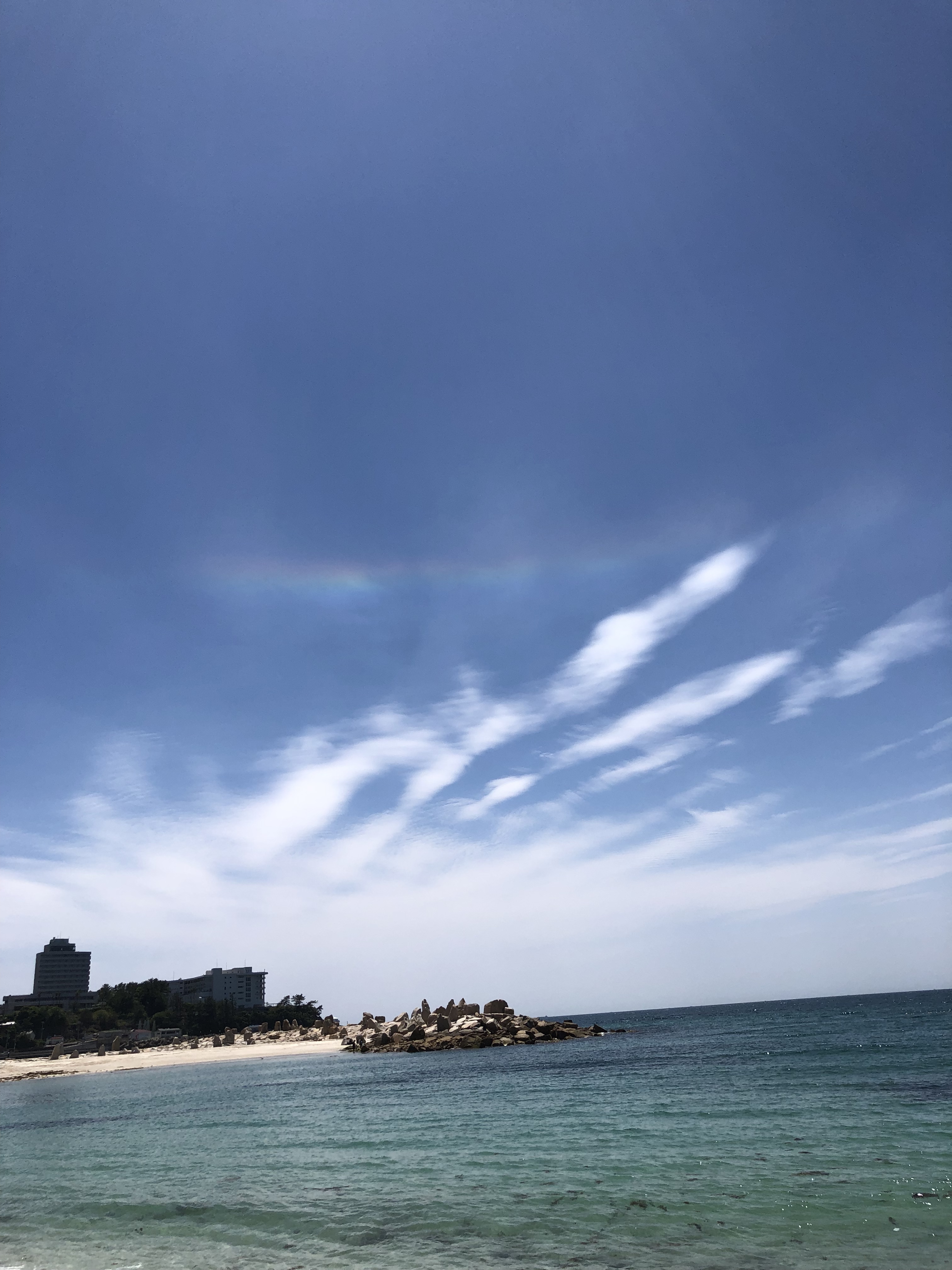
The secluded temple town of Koyasan has a long history as a sacred place, beginning in the early ninth century when Kobo Daishi wandered Japan in search of a suitable place to build a center for the religion he had founded, Shingon Buddhism. After years of searching, he settled on the wooded top of Mt. Koya and in 826 began construction of the original Garan complex. Today you can find more than a hundred temples here.
Many temples in Koyasan invite guests to stay overnight, and we stayed two nights in Souji-in, known for some of the finest vegetarian cuisine. We had spacious rooms, secluded in the back of a newer wing of the temple, a serene view of the gardens, and a bathroom that took up three rooms, including one with a wooden Japanese soaking tub. As is typical in traditional Japanese lodging, when we went to dinner, they had moved our table aside and laid out our futons for sleeping.
We explored part of the town before dinner, wandering down a scenic path, finding a red wooden bridge and then exploring the Garan complex, the first monastic complex entirely dedicated to the teaching and practice of Shingon Buddhism.
It includes the Kondo Hall, a large wooden temple hall where major ceremonies are held, and Konpon Daito (great Fundamental Pagoda), the tallest building in Koyasan. Completed in 876, it’s an early form two-storied pagoda and a symbol of Koyasan, a town we discovered was filled with a peaceful beauty.
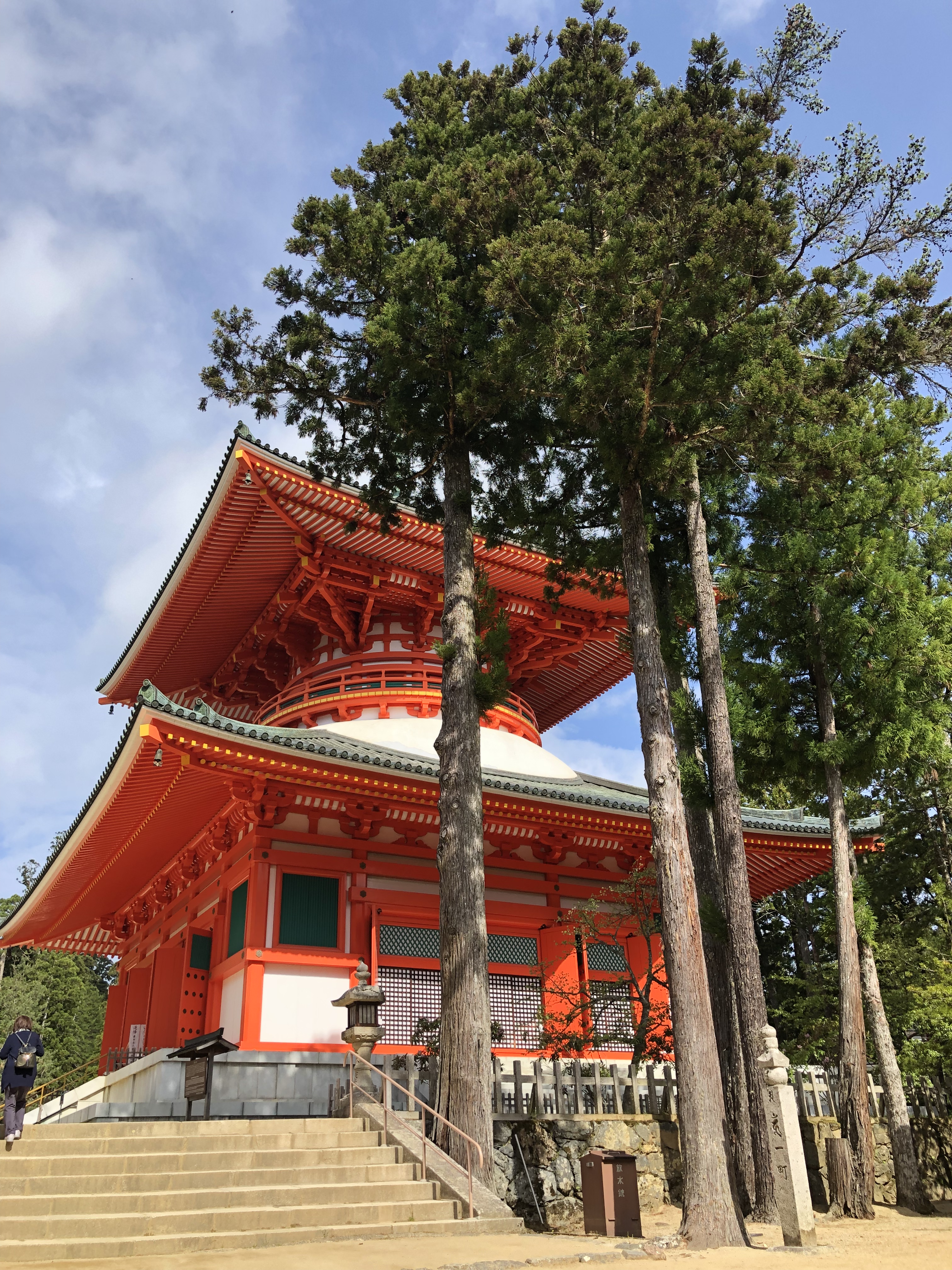
Dinner was at 7 pm and they called us at 6:59 pm to make sure we were coming. The meal and the ones that followed were Buddhist vegetarian cuisine (Shojin Ryori). Made with the “delicate enhancement of a natural taste” and the use of limited ingredients, Shojin Ryori is based on the concept of five flavors, five cooking methods and five colors. Each meal includes a grilled dish, a deep-fried dish, a pickled dish, a tofu dish and a soup dish.
Not only was it some of the best vegetarian food we had ever enjoyed, but also some of the most delicious food of any kind. Each meal was perfectly balanced, served by a monk and was a delight for the eyes and the palate.
The next morning, we set off to explore more of the town and started our day (after our breakfast at the temple) with coffee at the Powerstone Café. The barista, who clearly liked Snoopy, was a wonderful host.
We continued up the hill through the Daimon Gate, the traditional entrance to Koyasan, and entered a pilgrimage route that we followed a few kilometers up Mt. Benten Dake and down to Nyoindo, a temple on the periphery of Kyosan. It is the last temple standing built especially for women. Here we also found the Koyamaki Protected Forest, a forest of umbrella pines extinct everywhere but in Japan and Korea.
We moved on to Okunoin, where more than 200,000 grave stones and pagodas stretch through a forest of ancient, towering cedar trees. There was a powerful, awe-inspiring energy along this sacred space, a 2km walk to Kobo Daishi’s mausoleum that we will never forget. We plan to visit again and walk it at night, when the path is lit by lanterns.
The next morning, we joined a 6 am morning prayer ceremony. When the head monk was done chanting the sutra, he sat with us, giving a short talk to those in attendance—all in Japanese. Fortunately, a young monk handed us a one-page summary of his talk and the main message was this:
All we can do is to appreciate the past and for the future, to wish and pray for the peace for those around you.
Next Up: The Kumano-Koda Pilgrimage Walk
